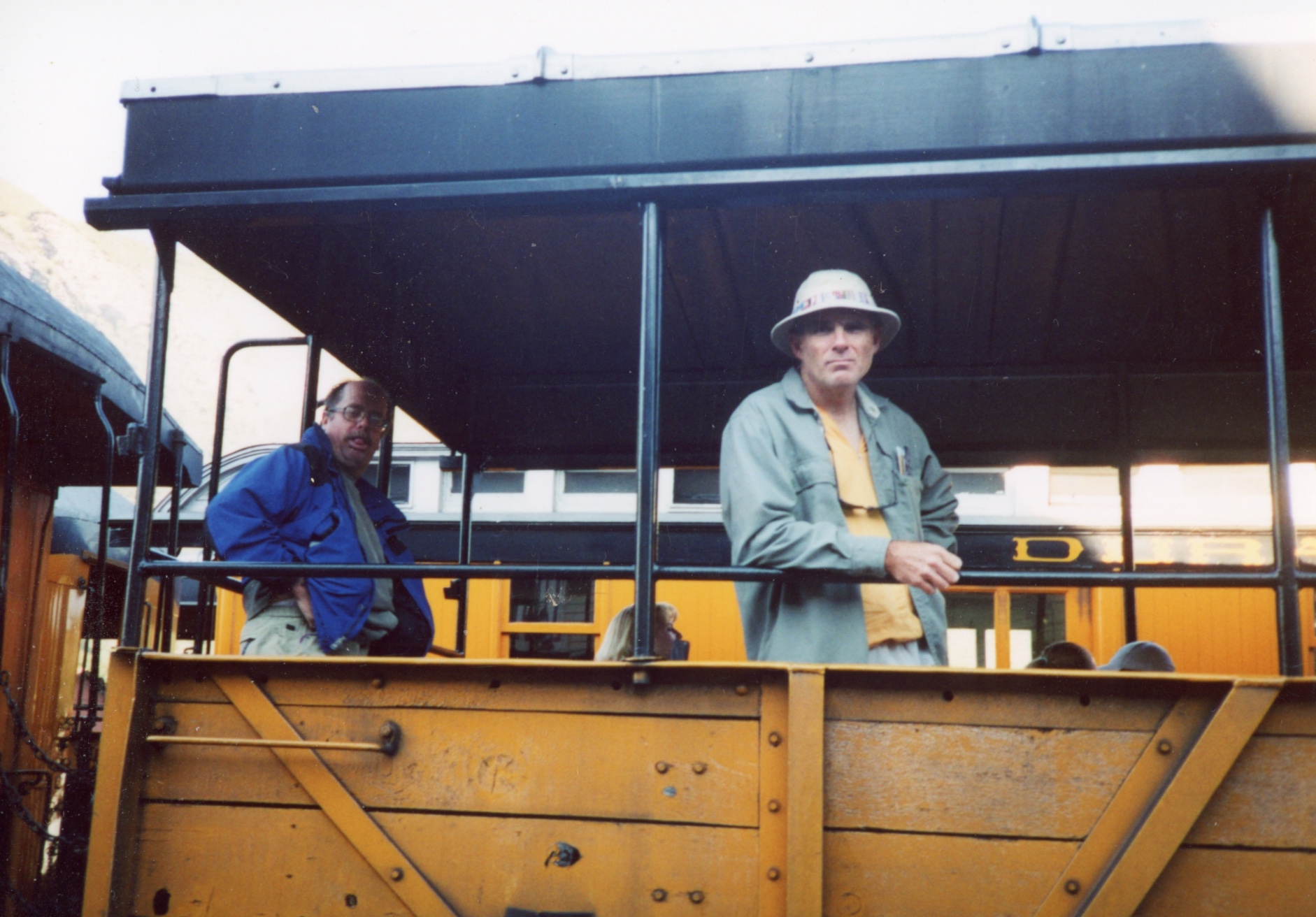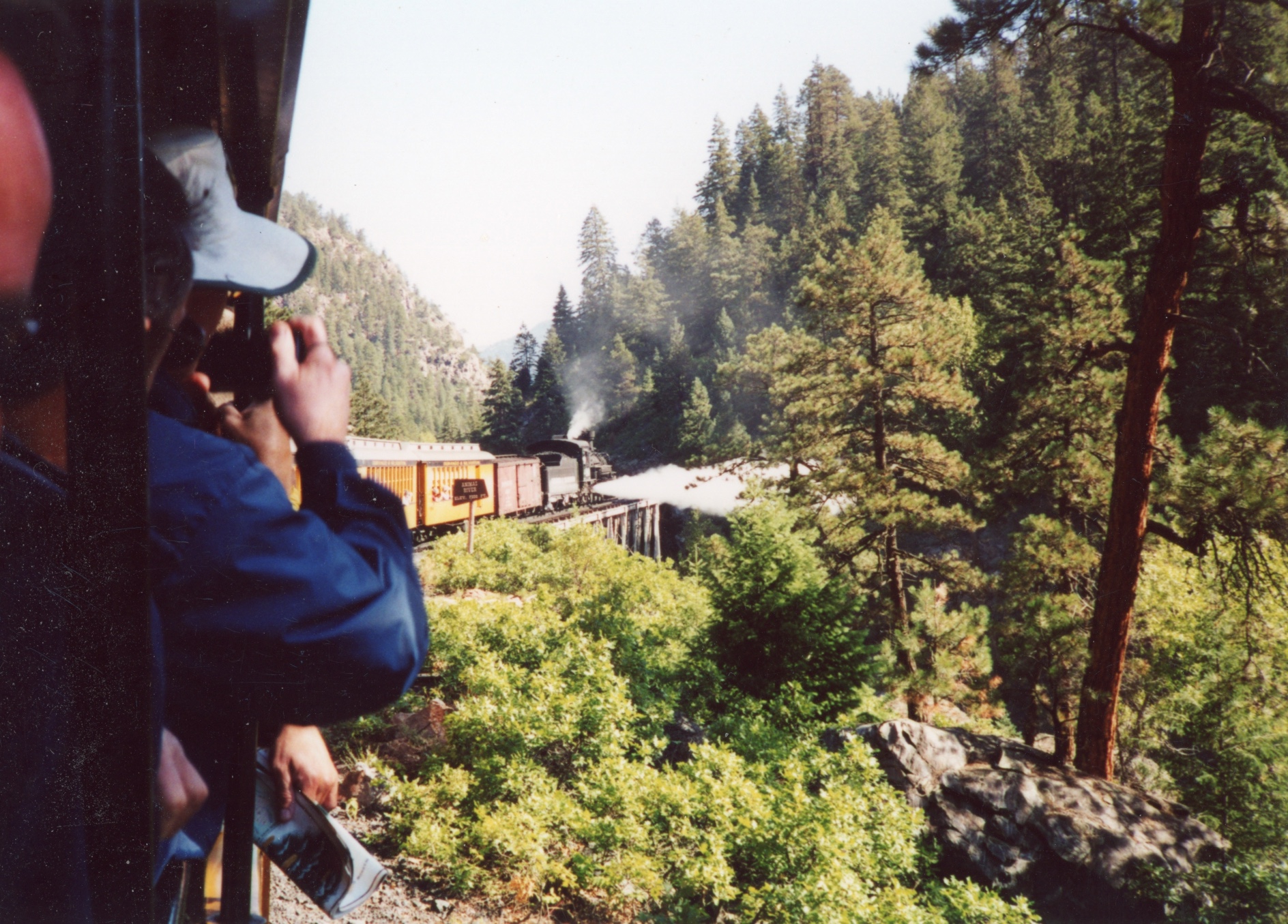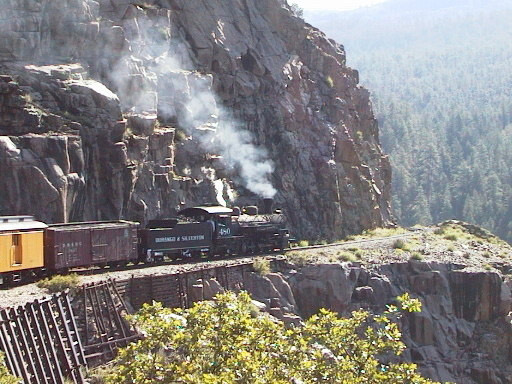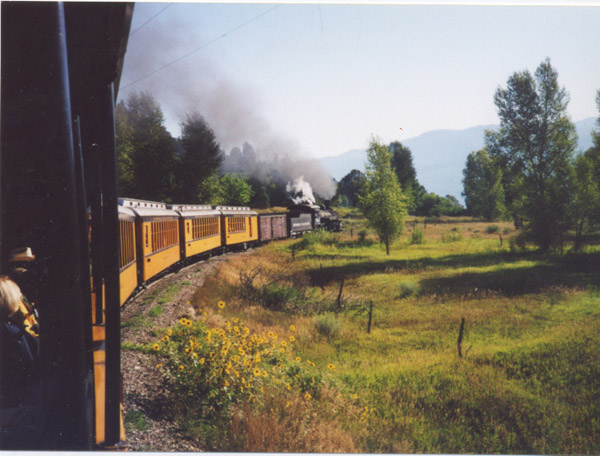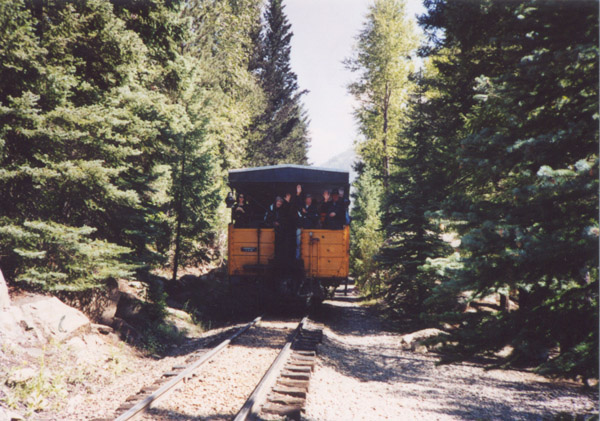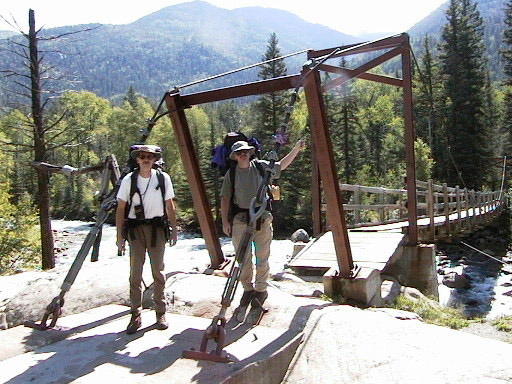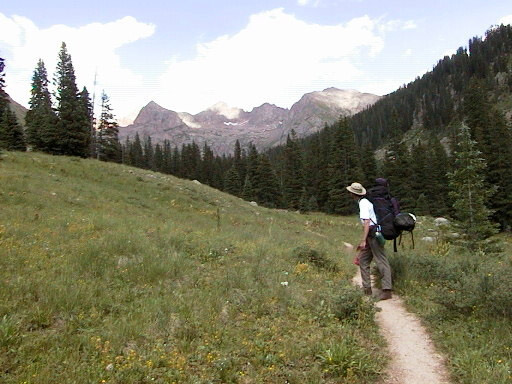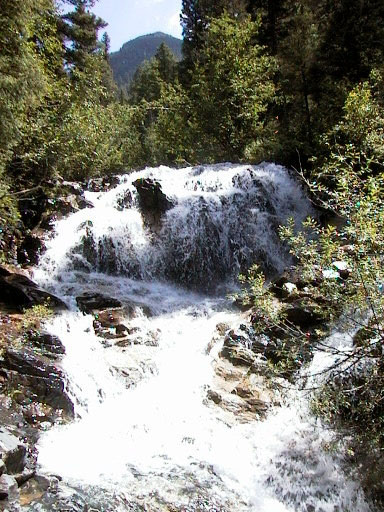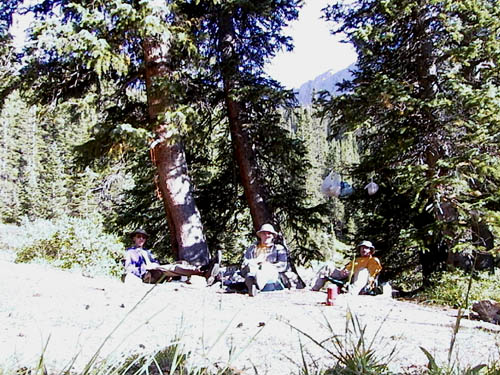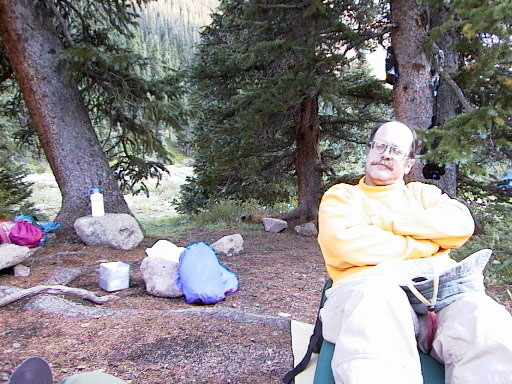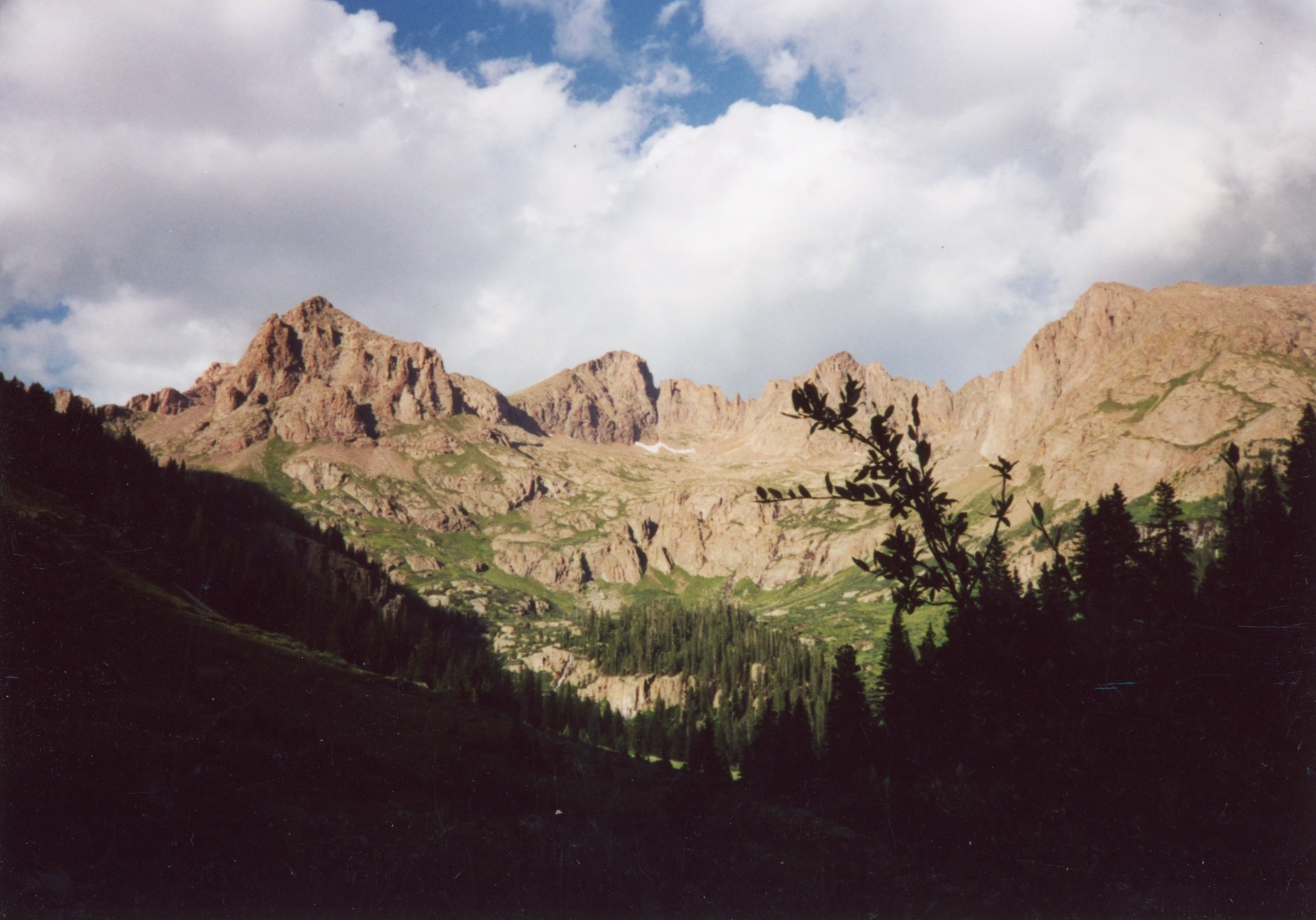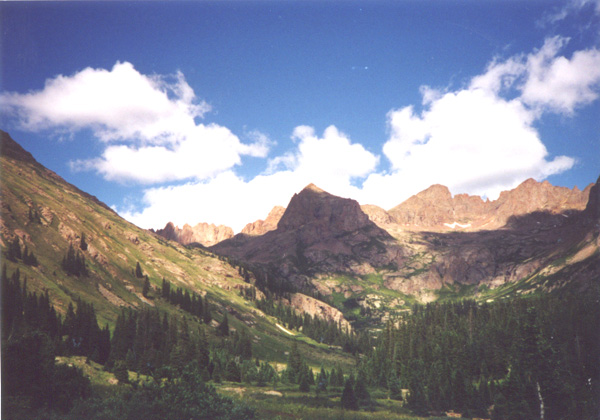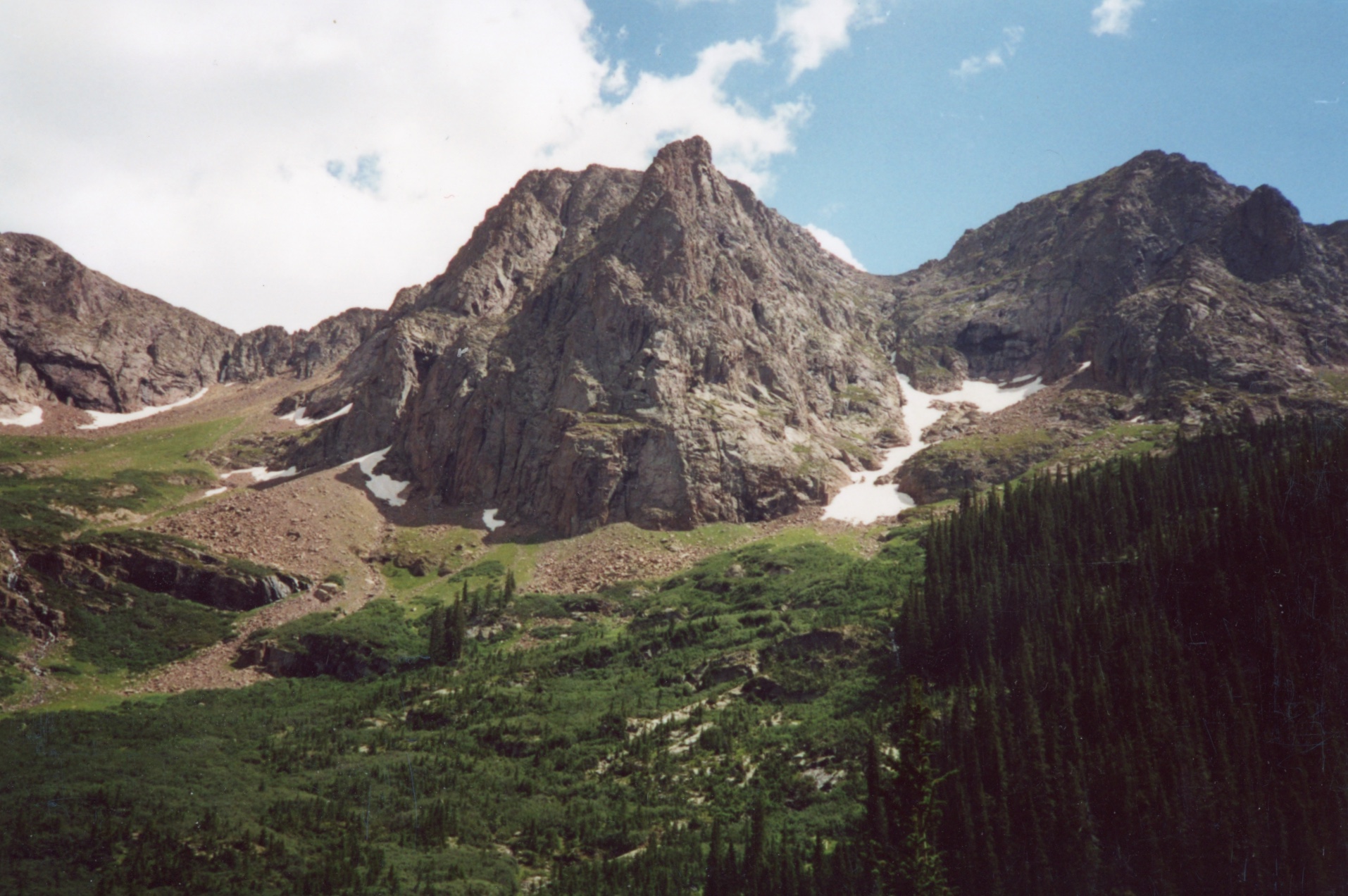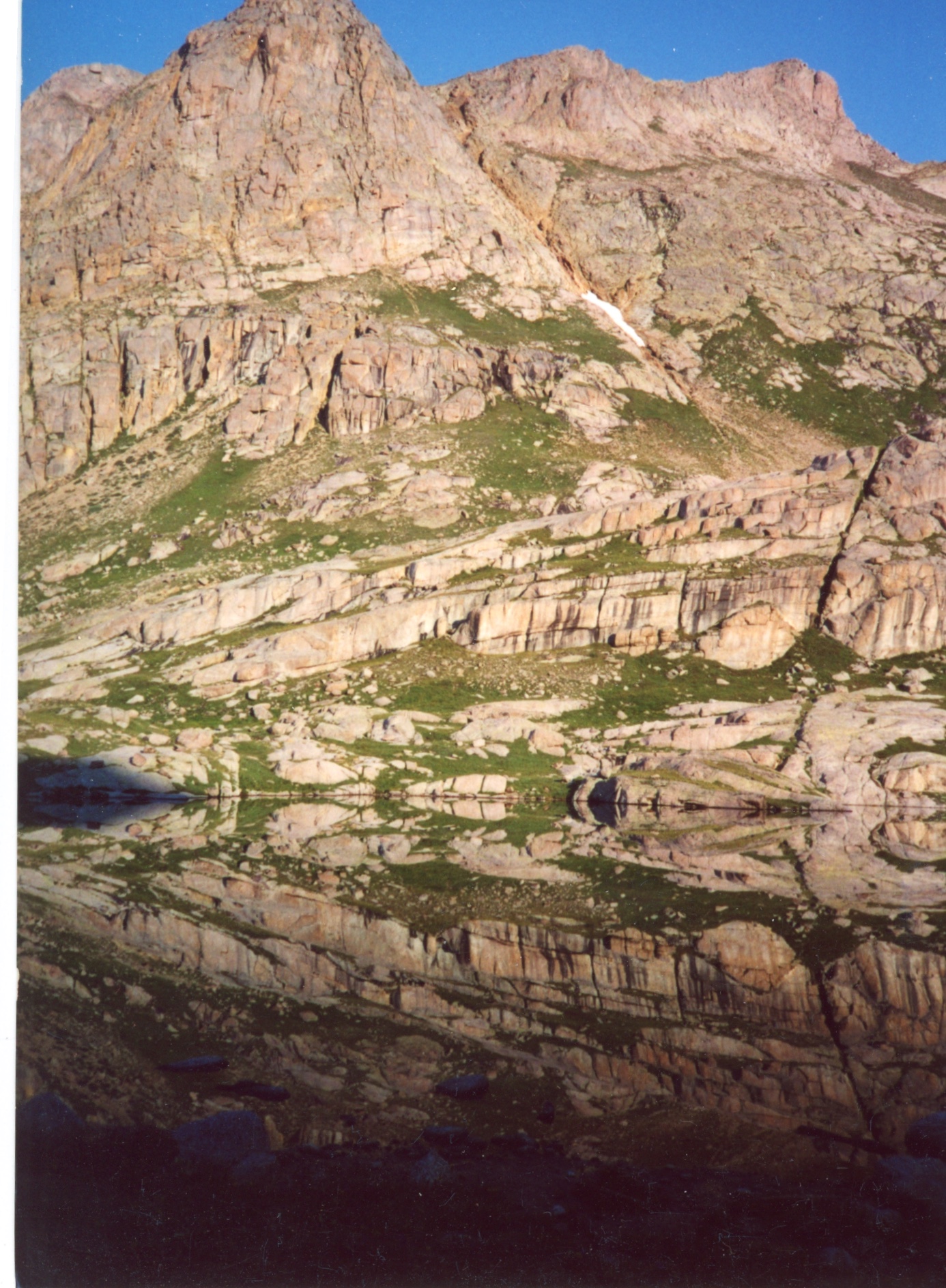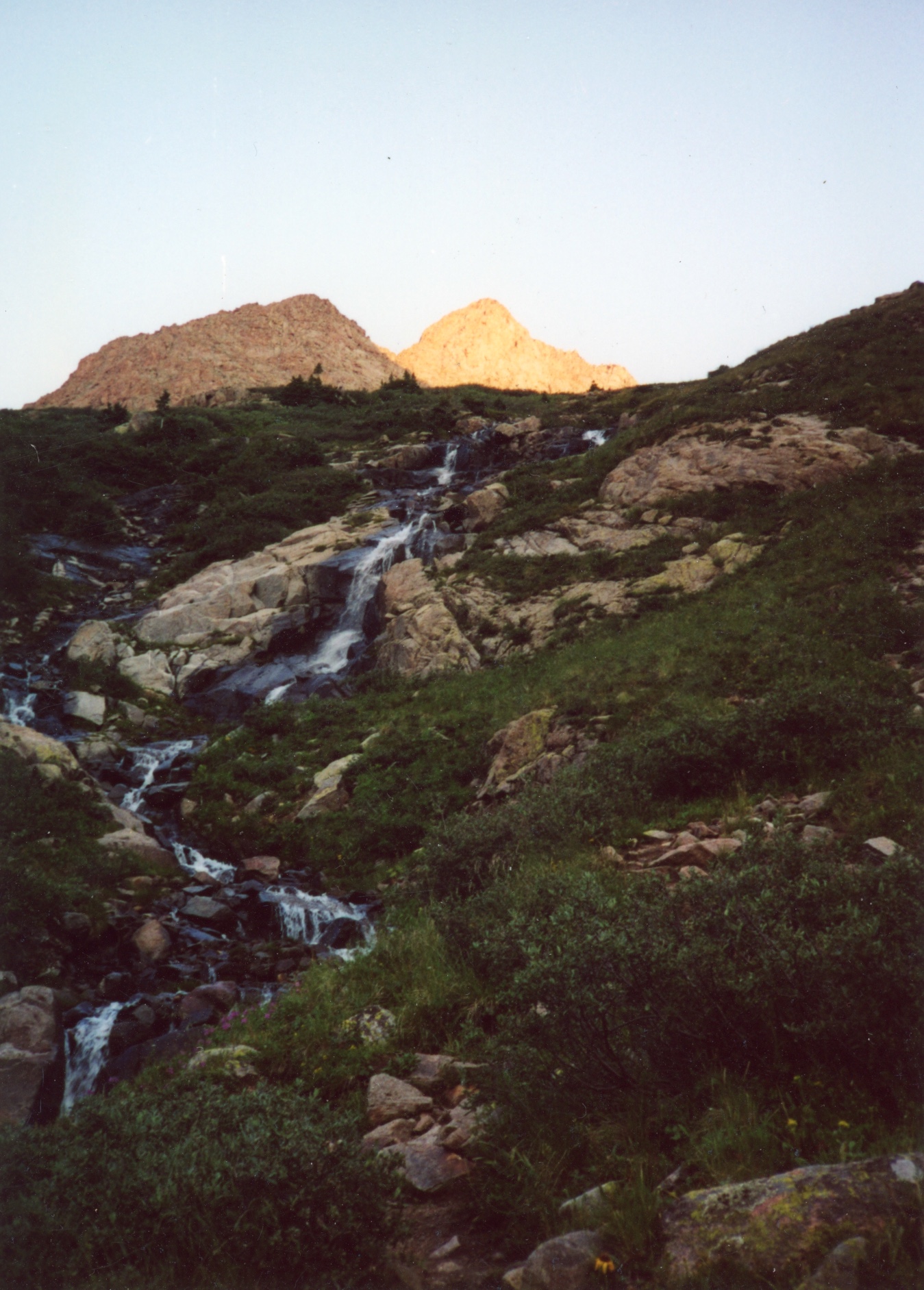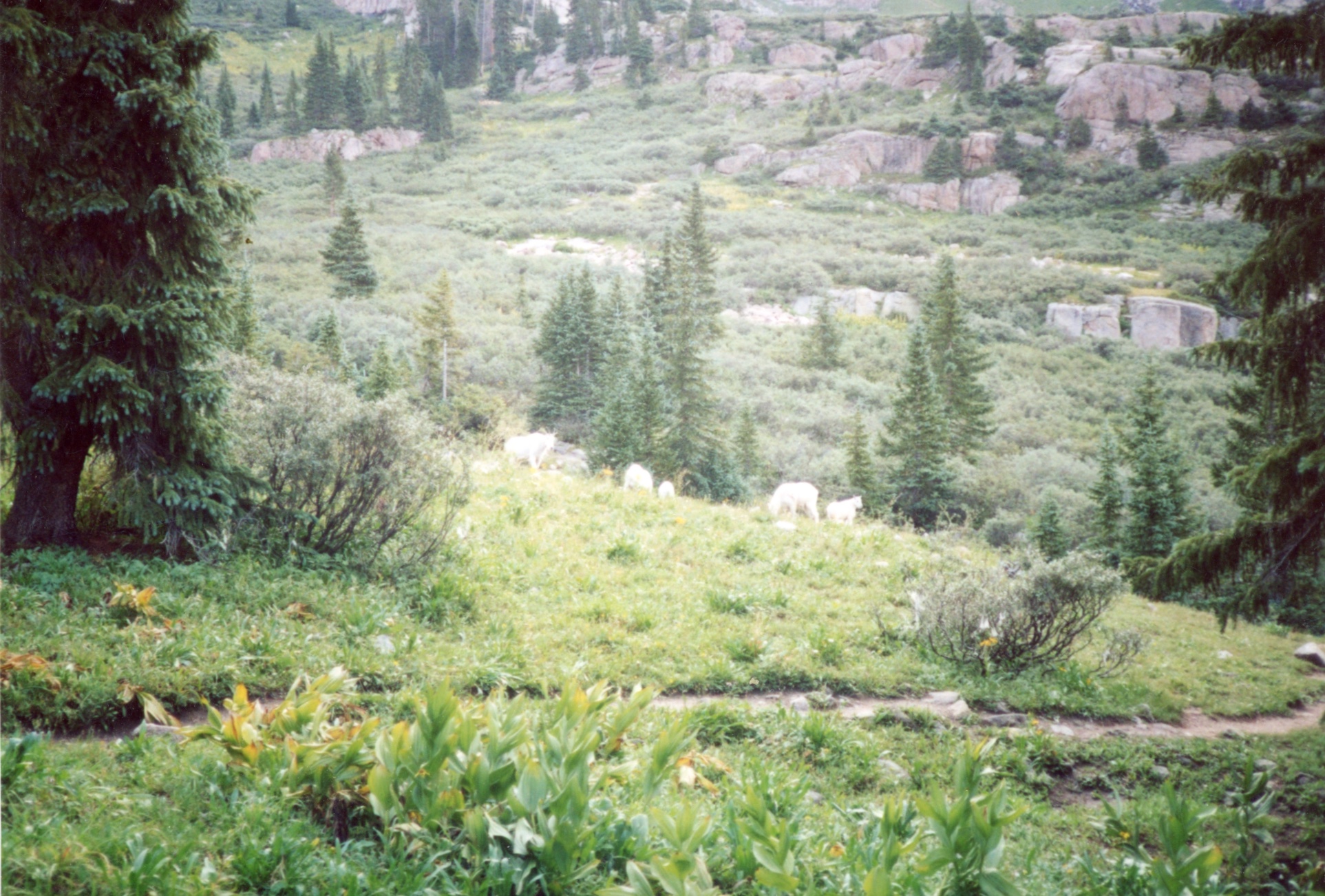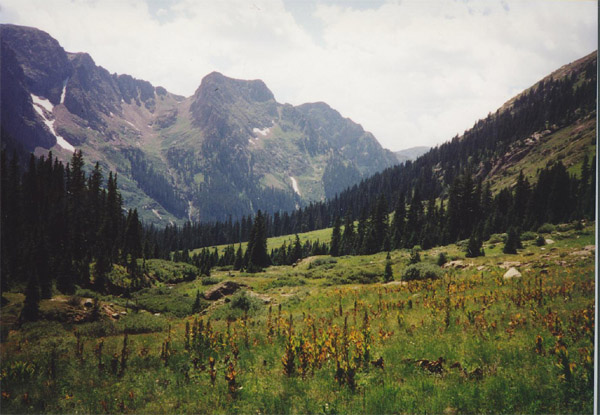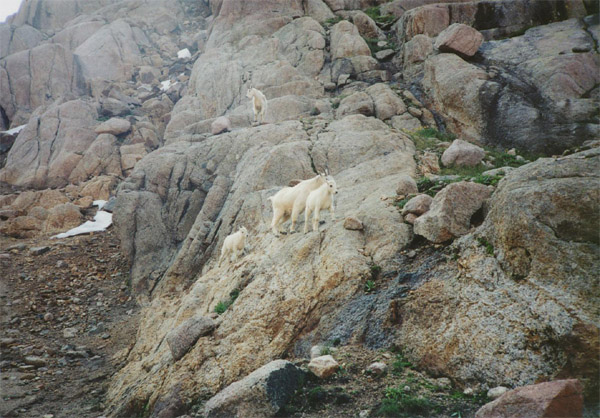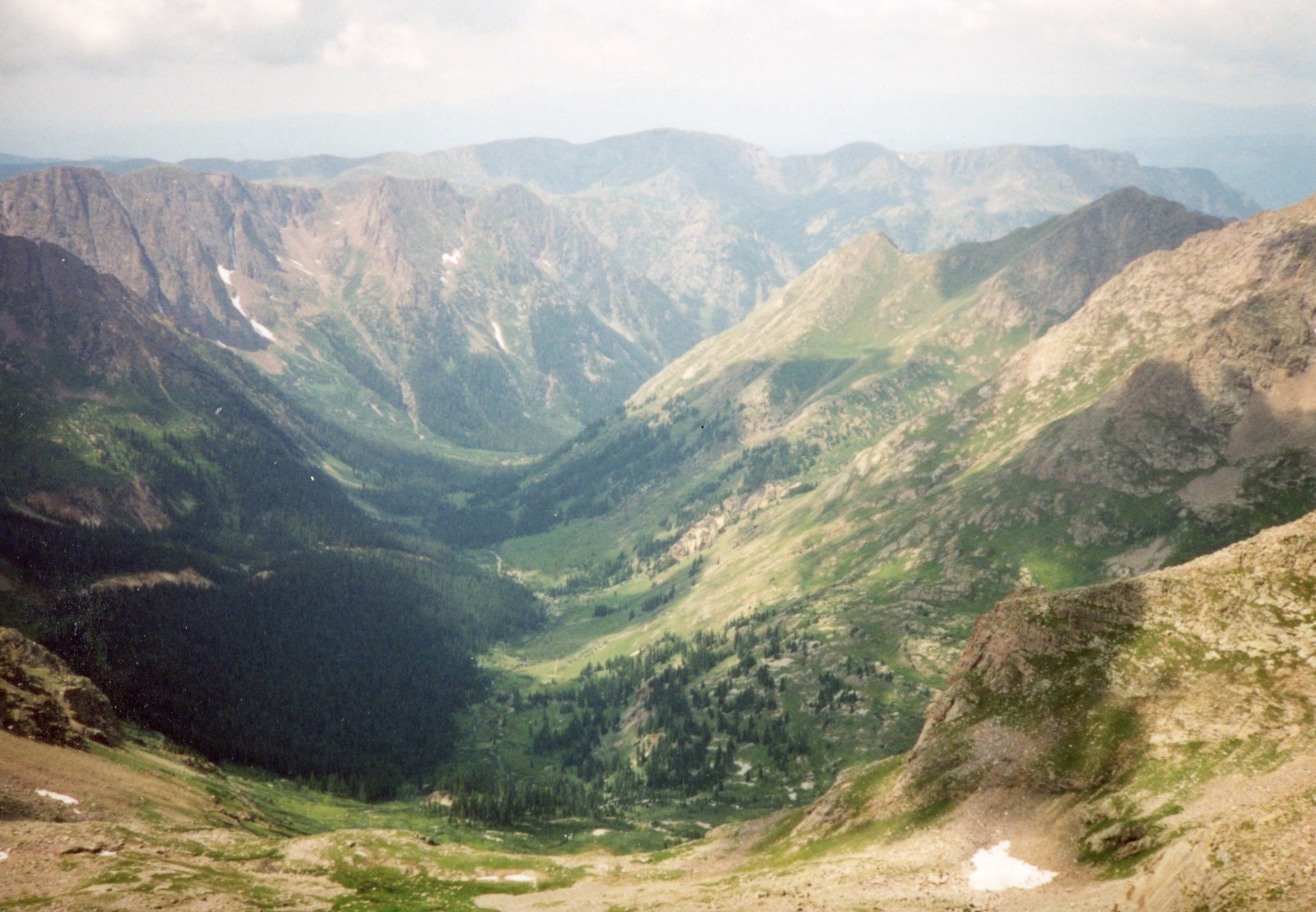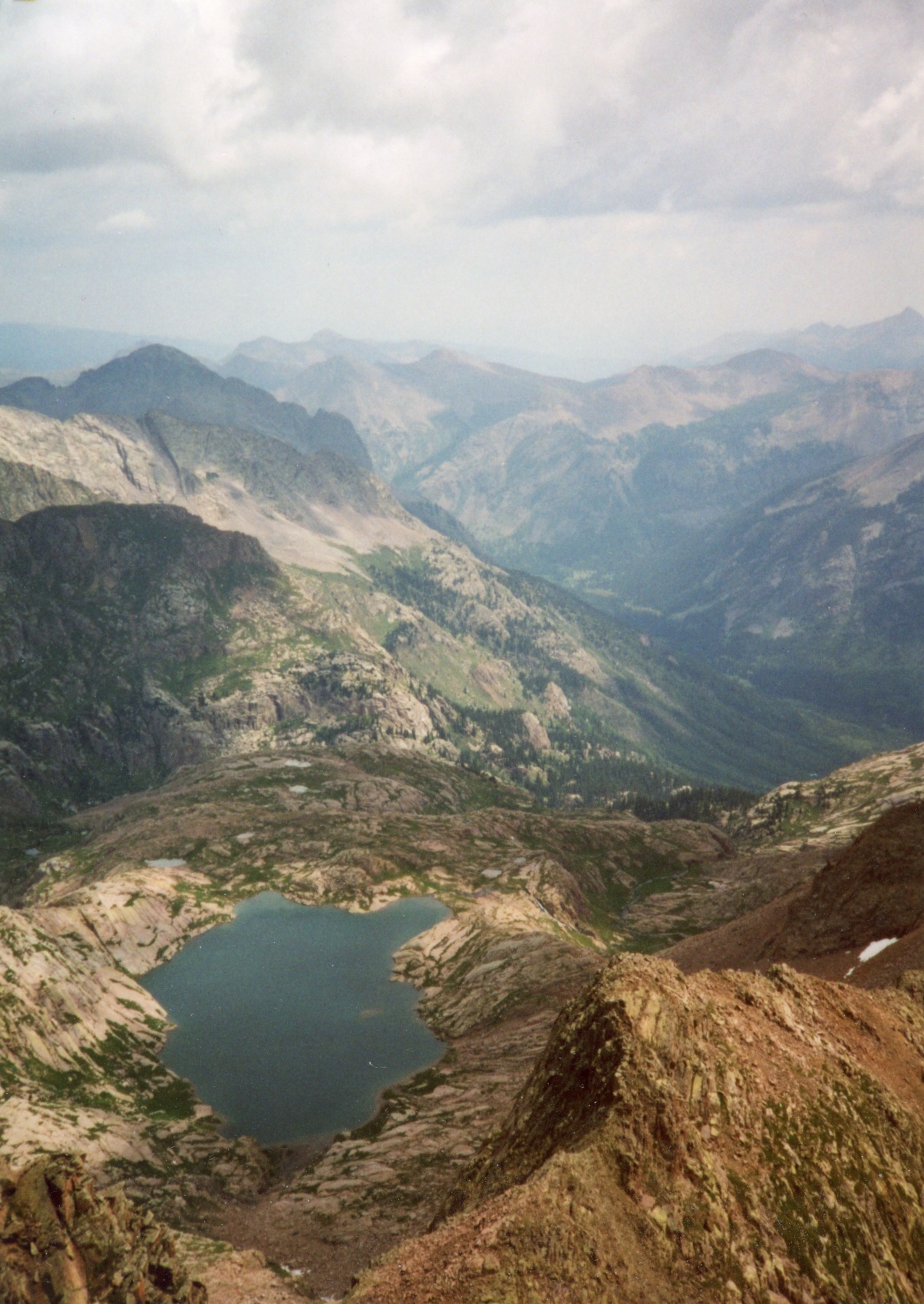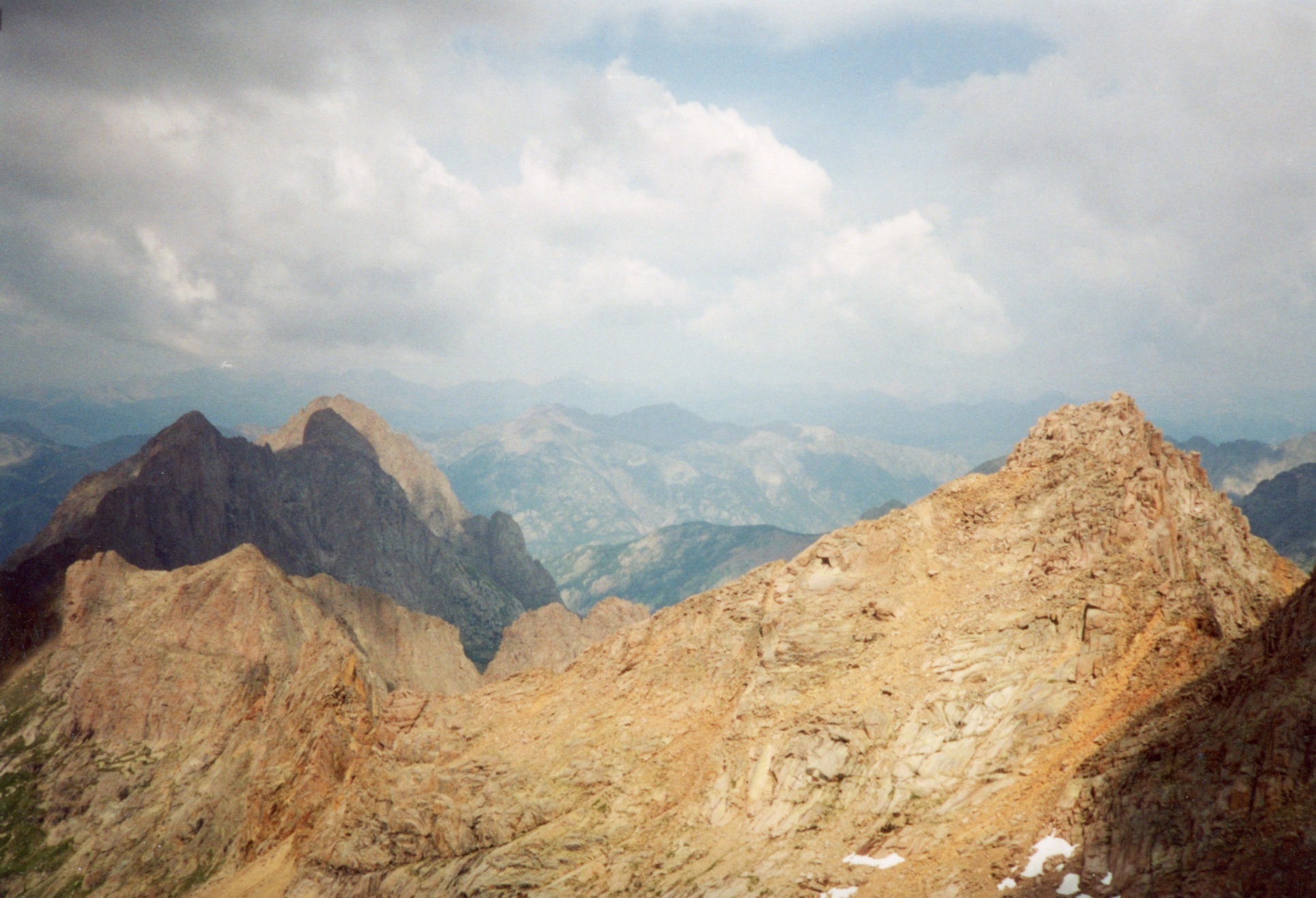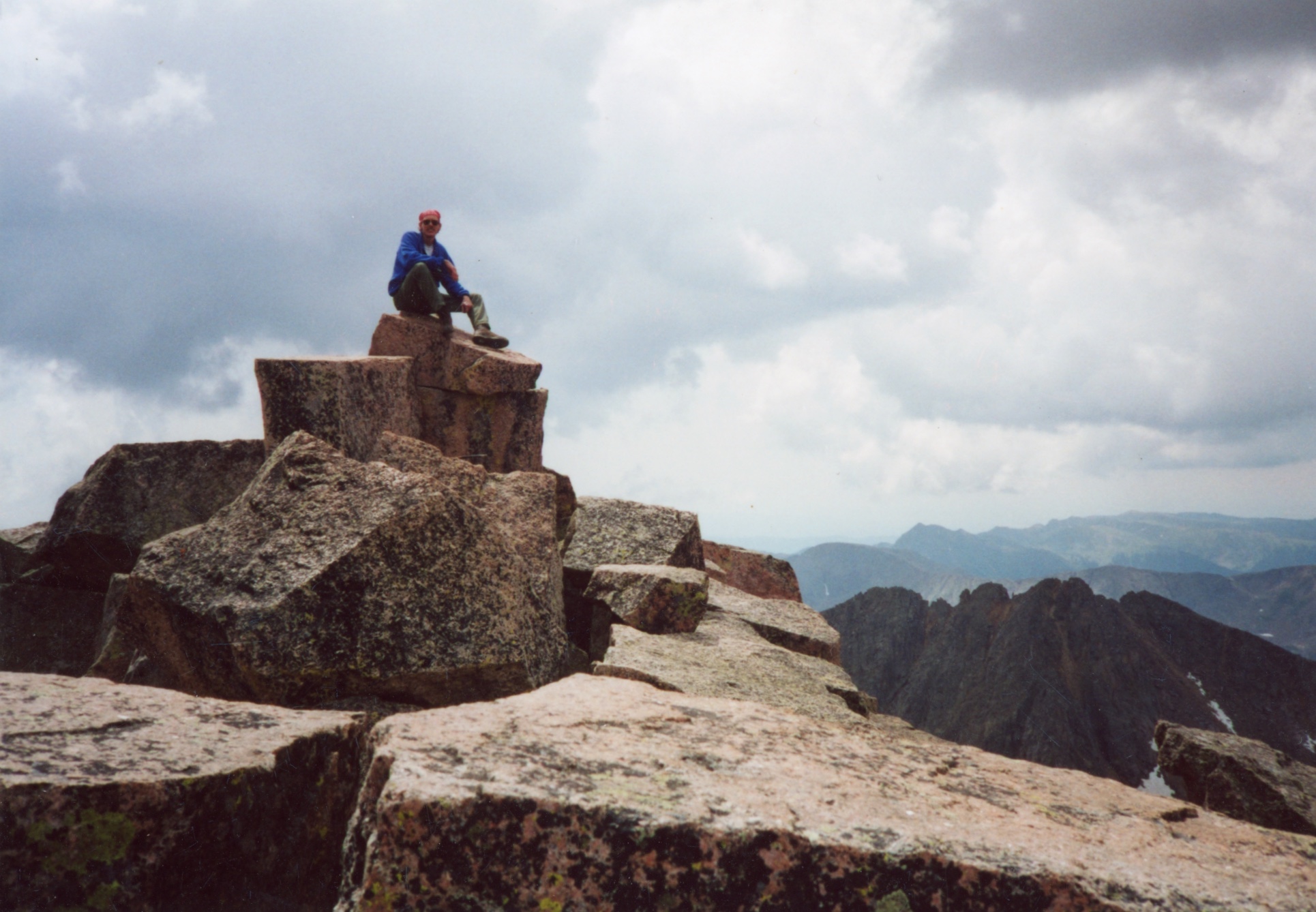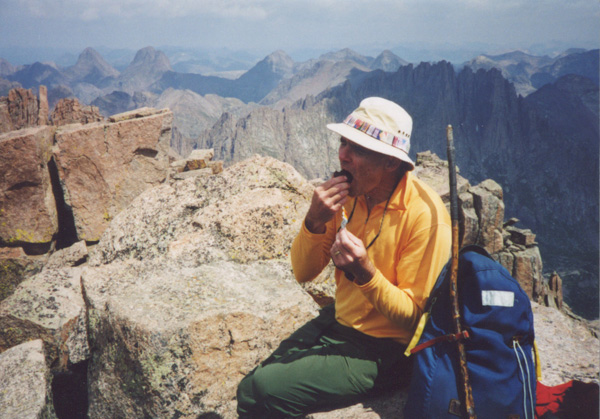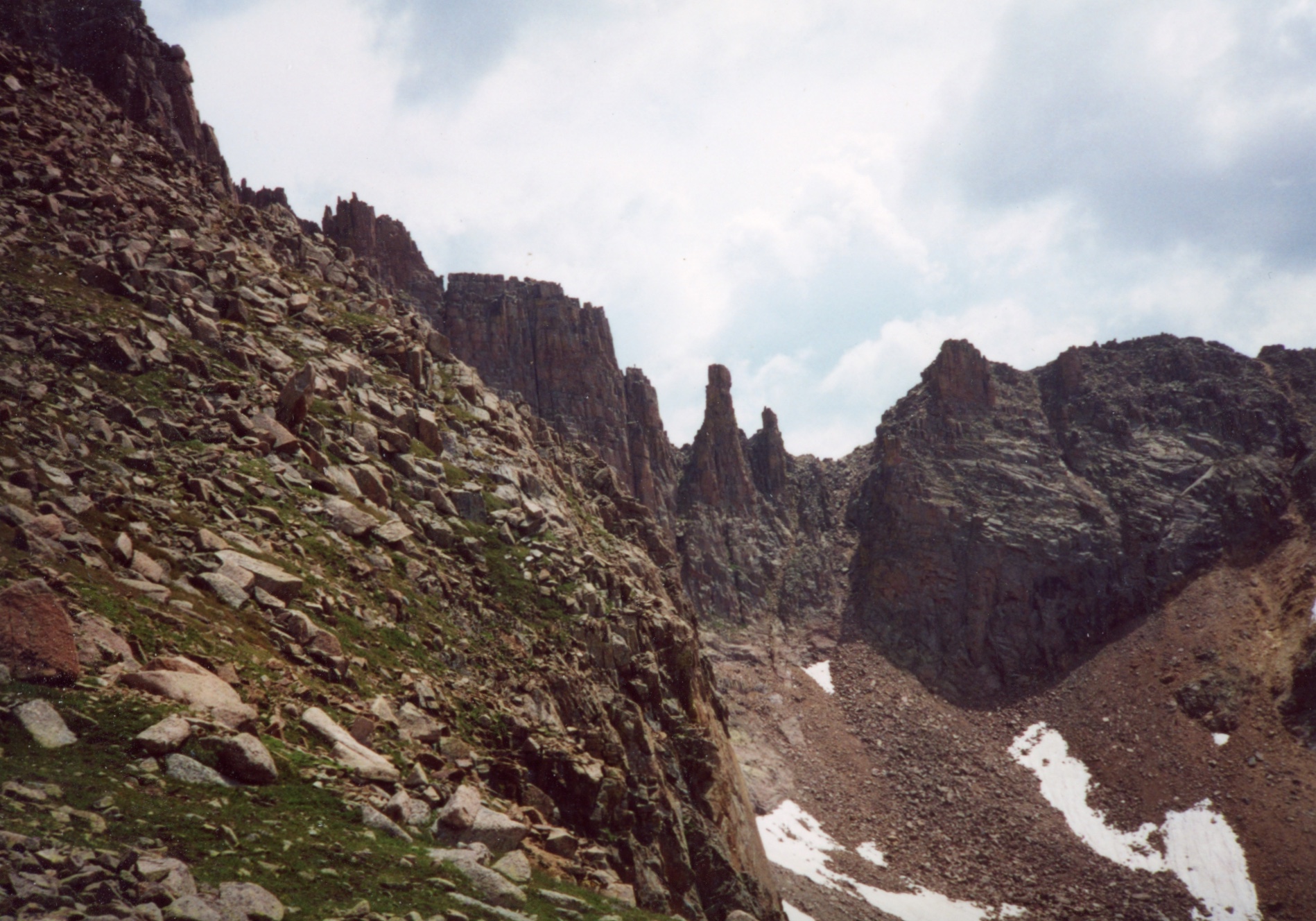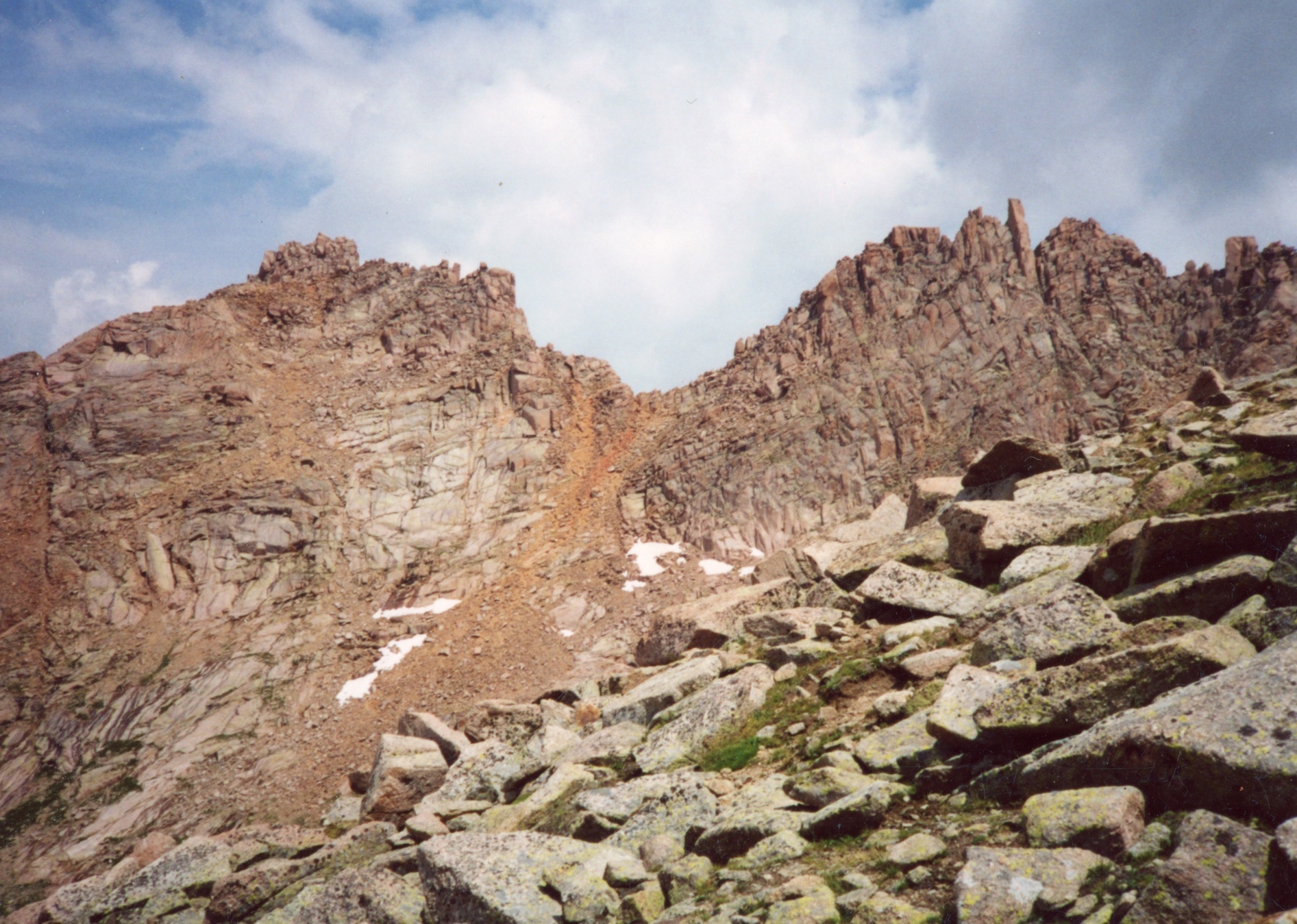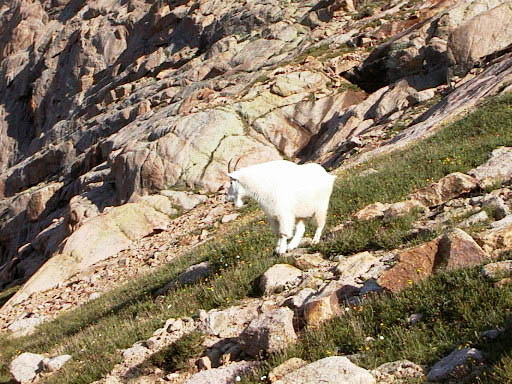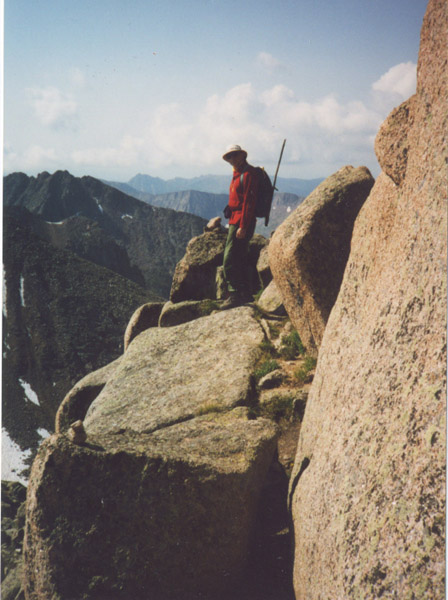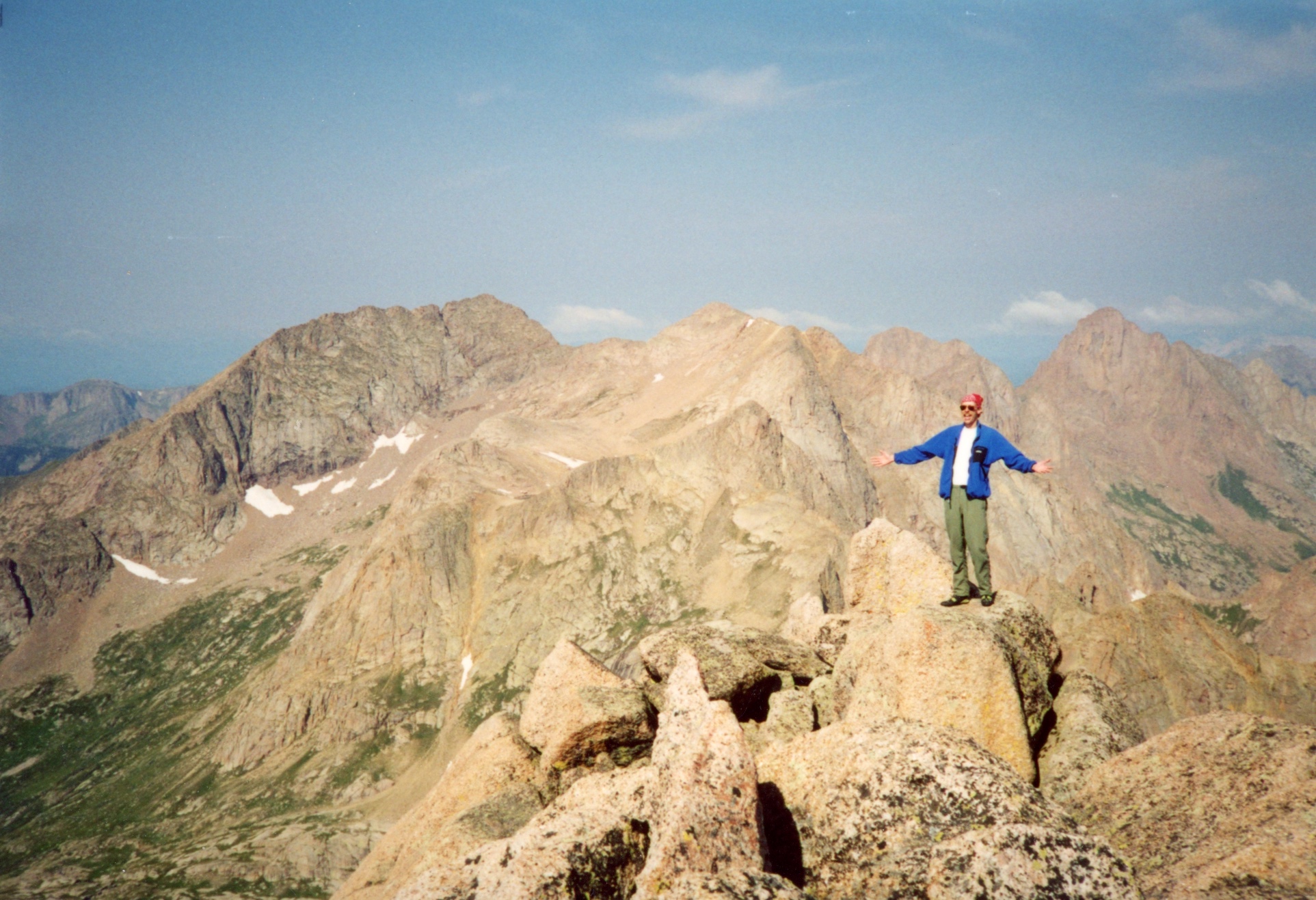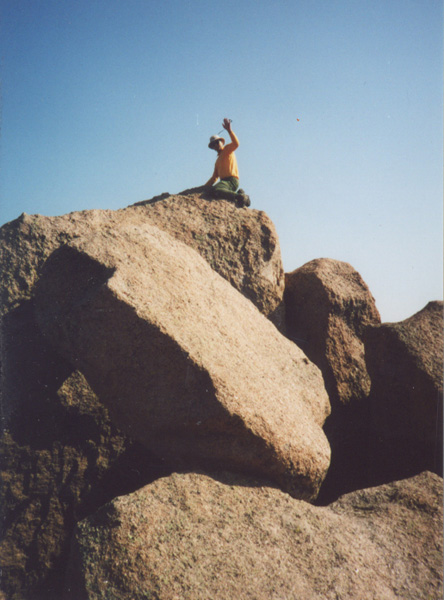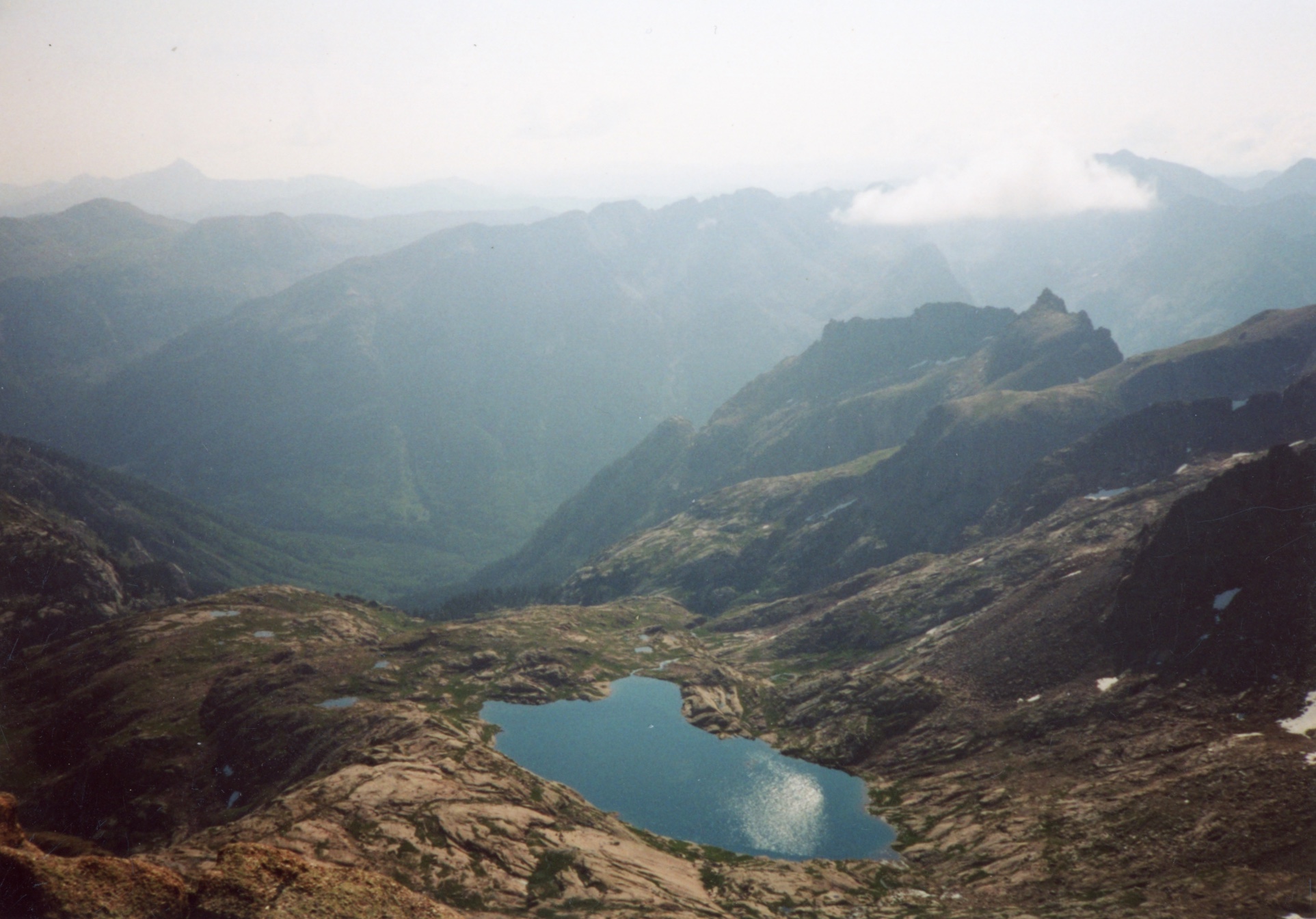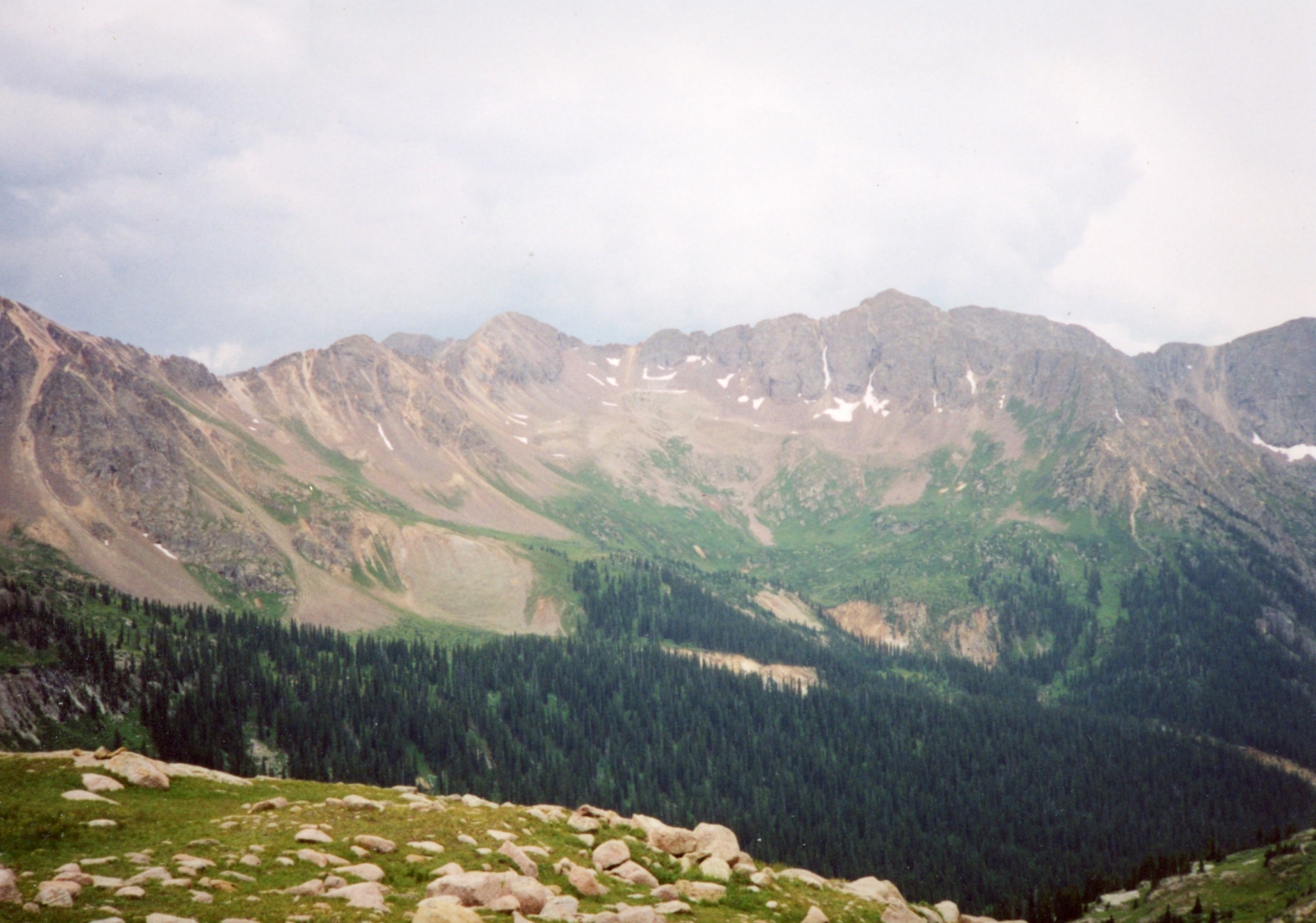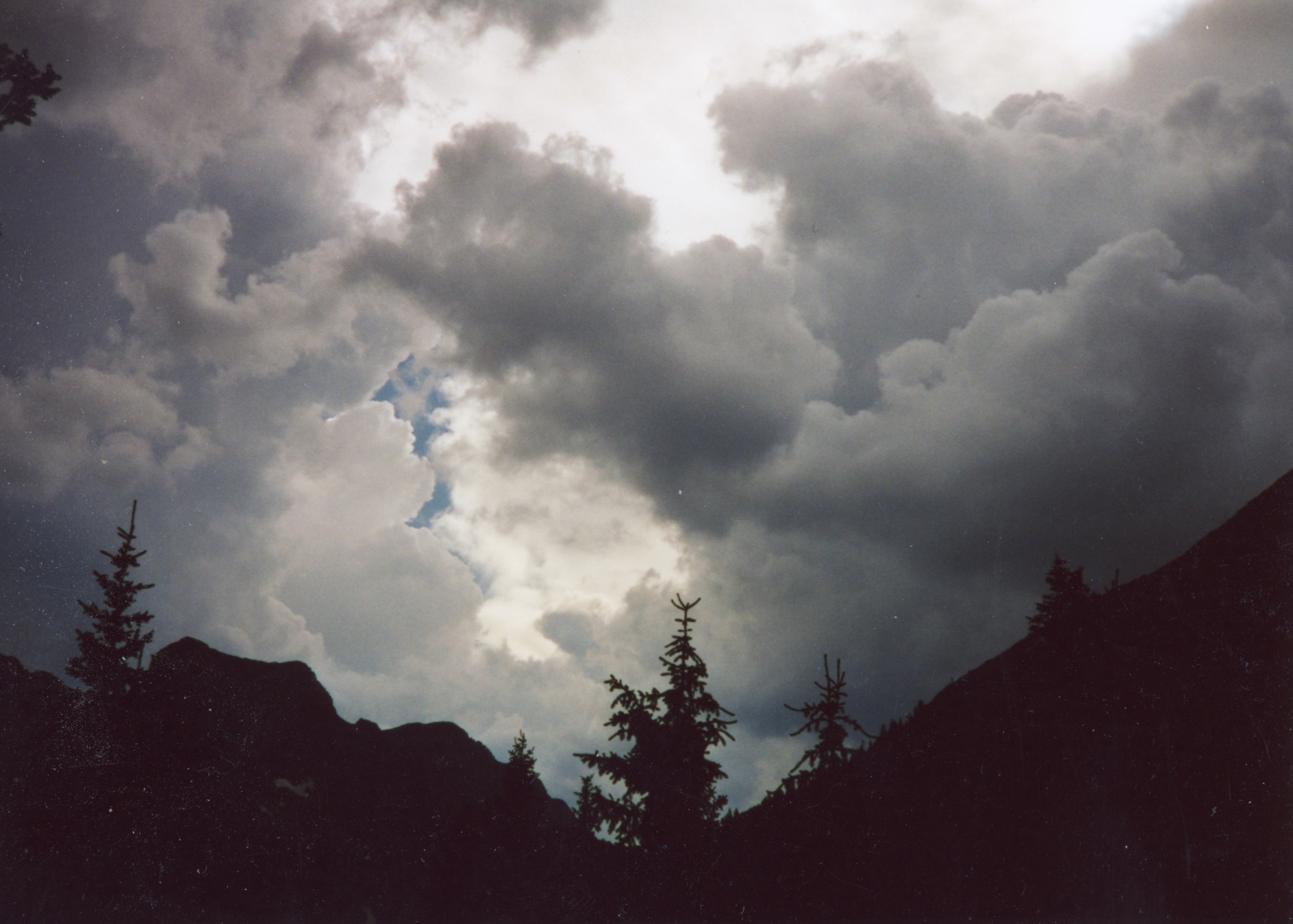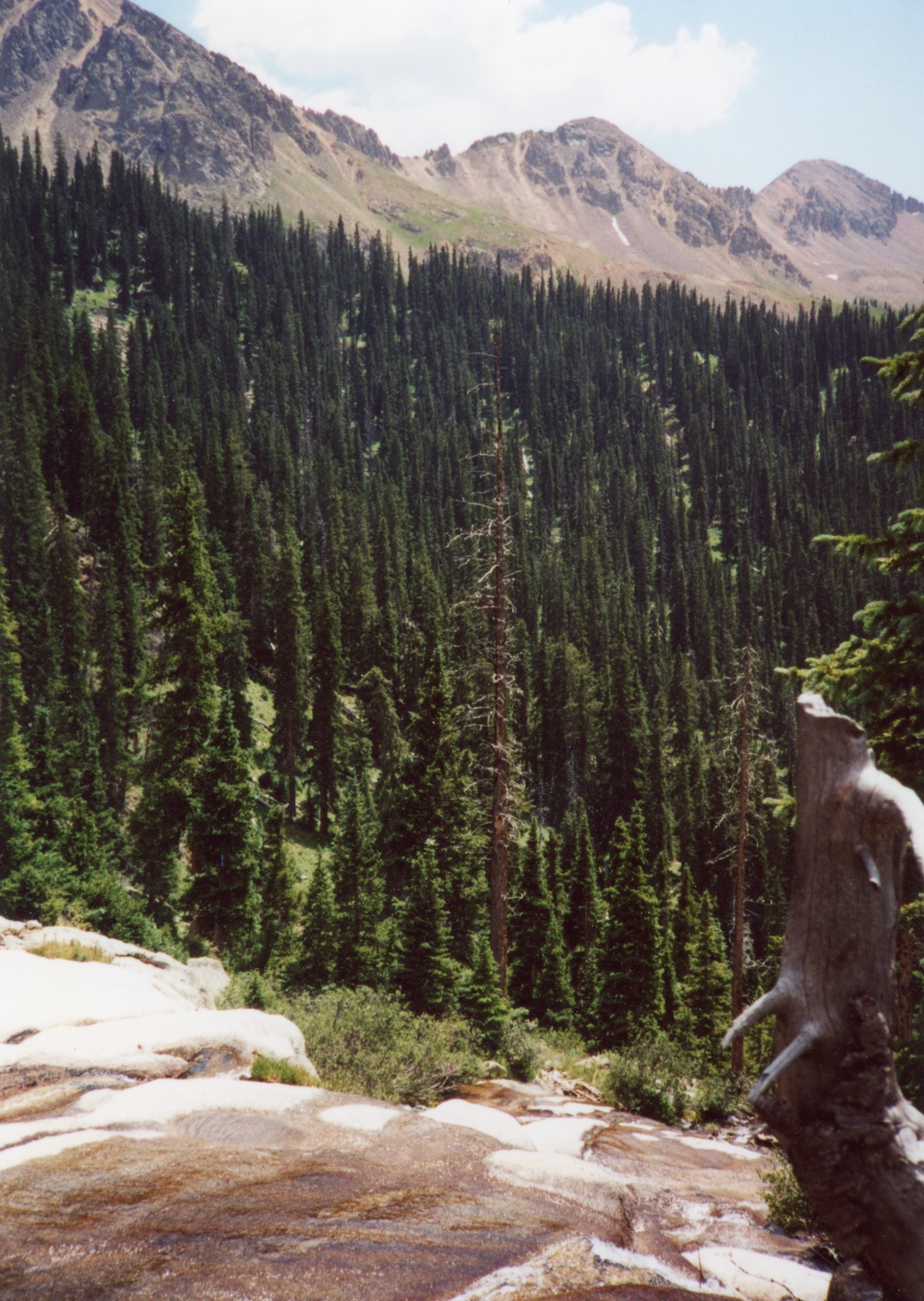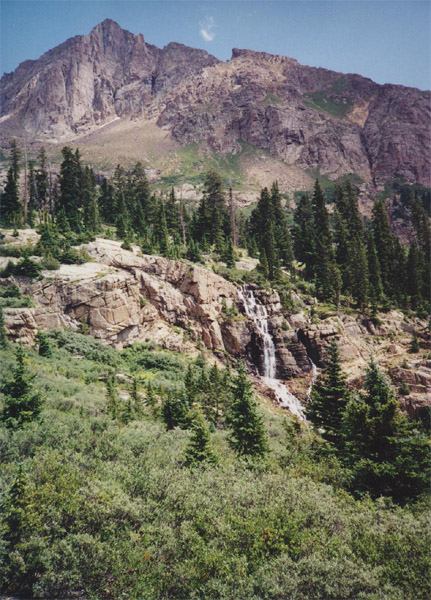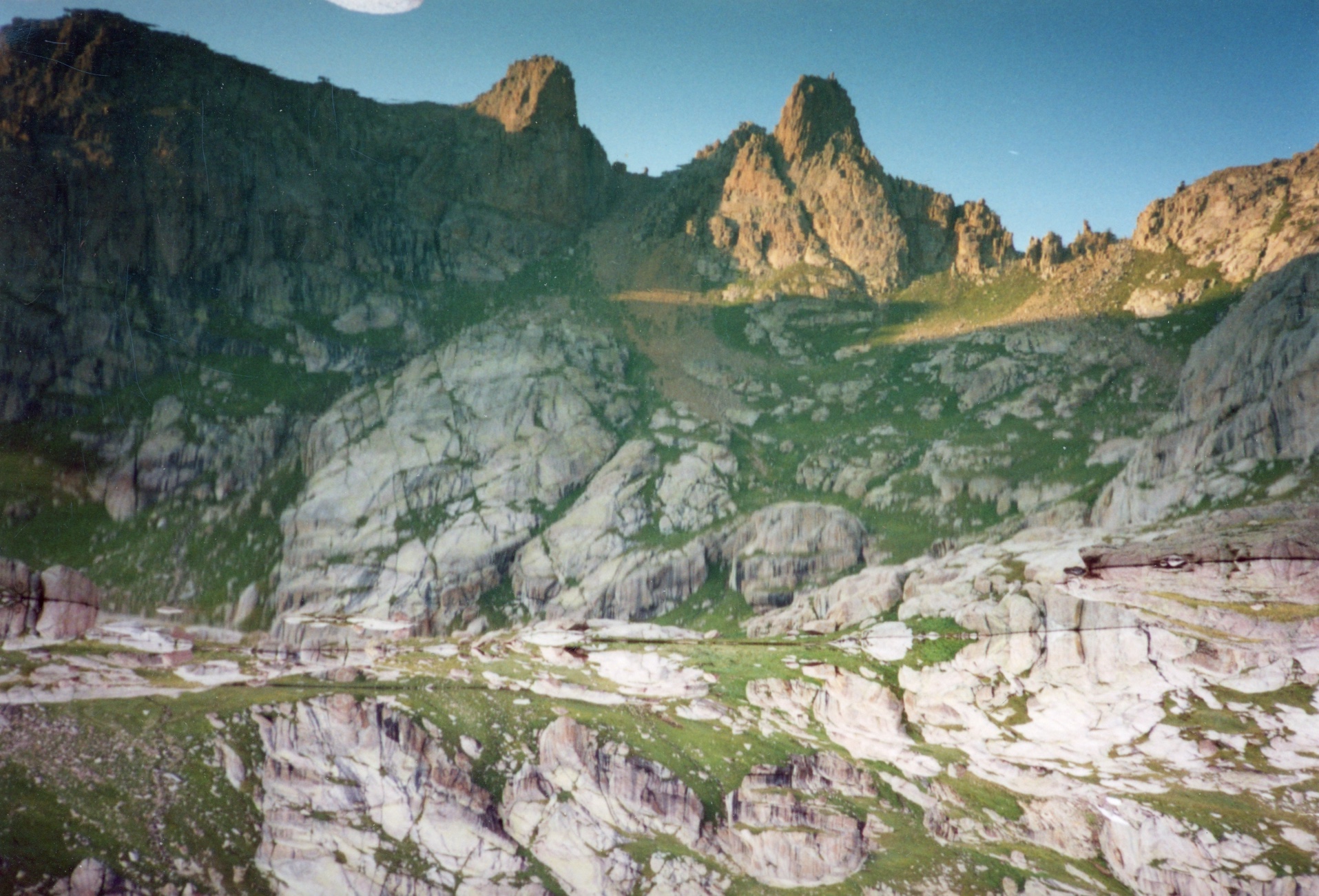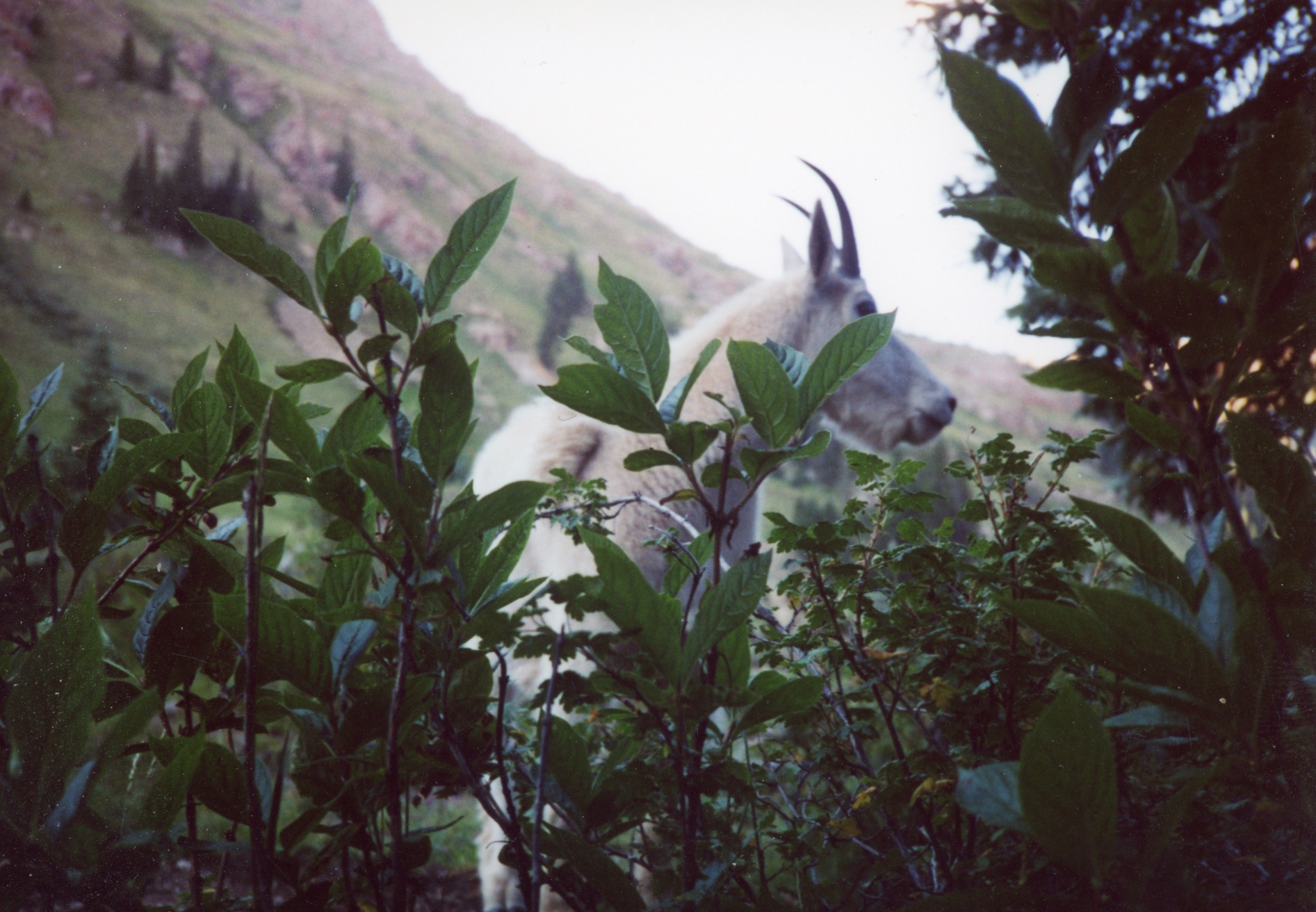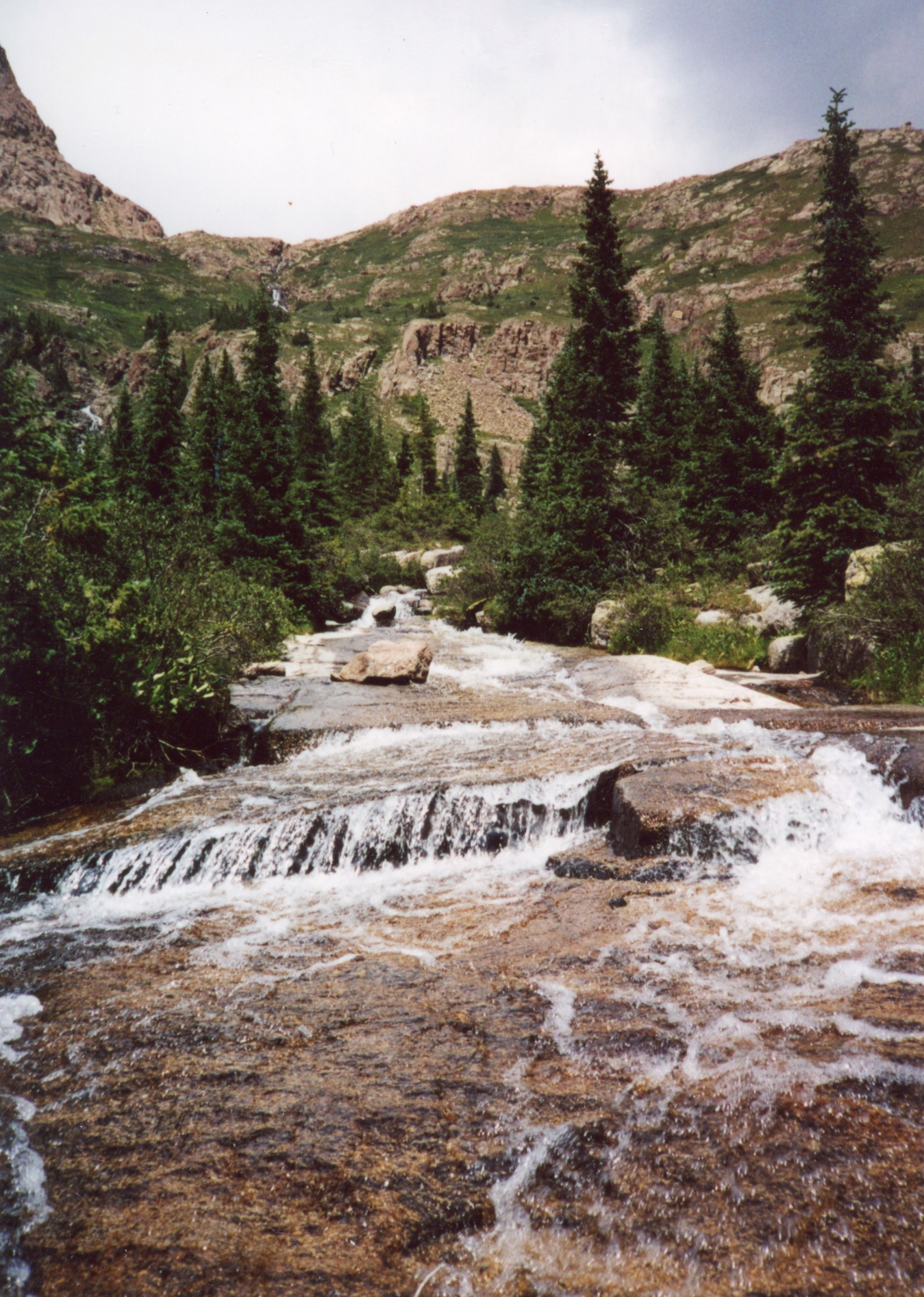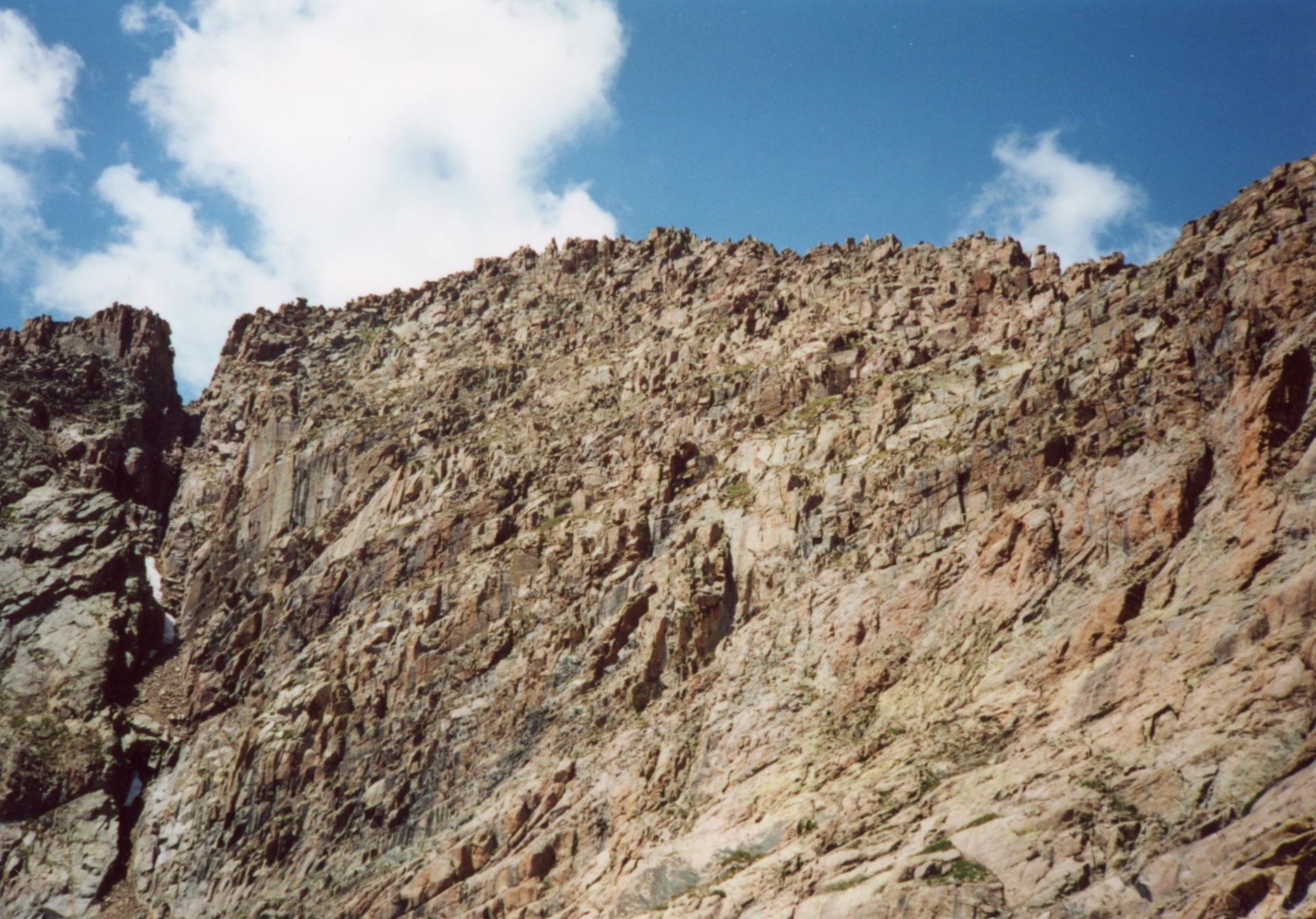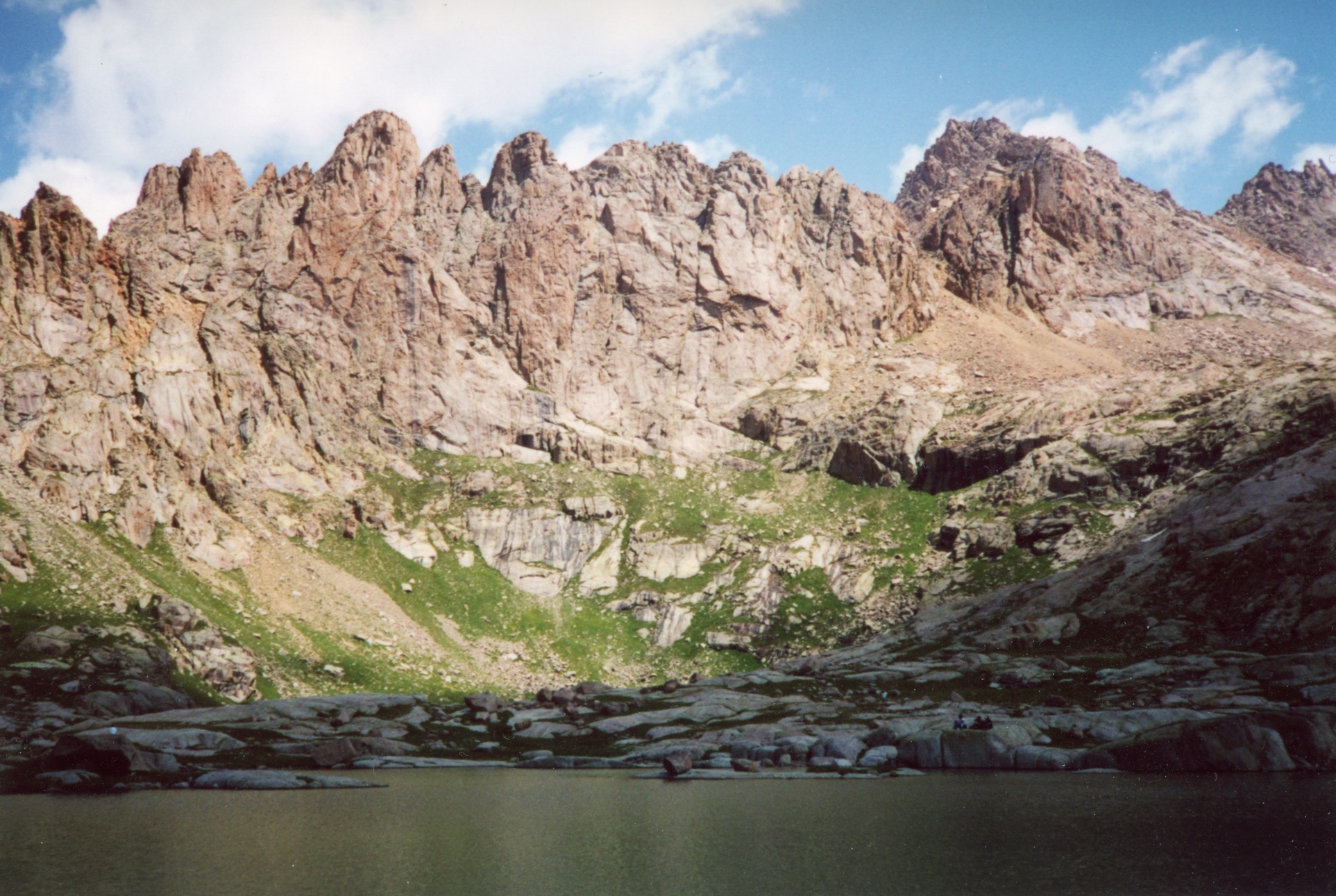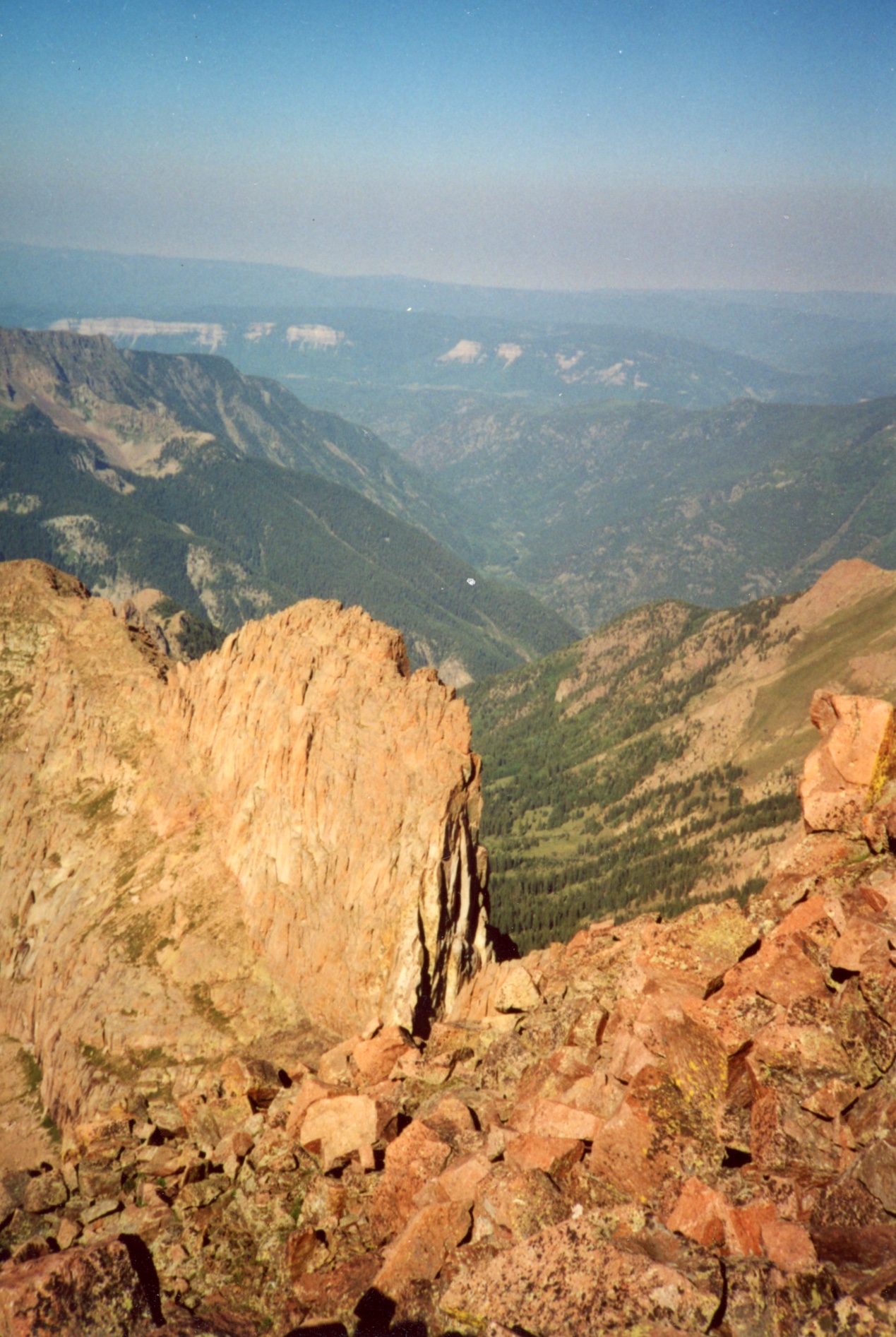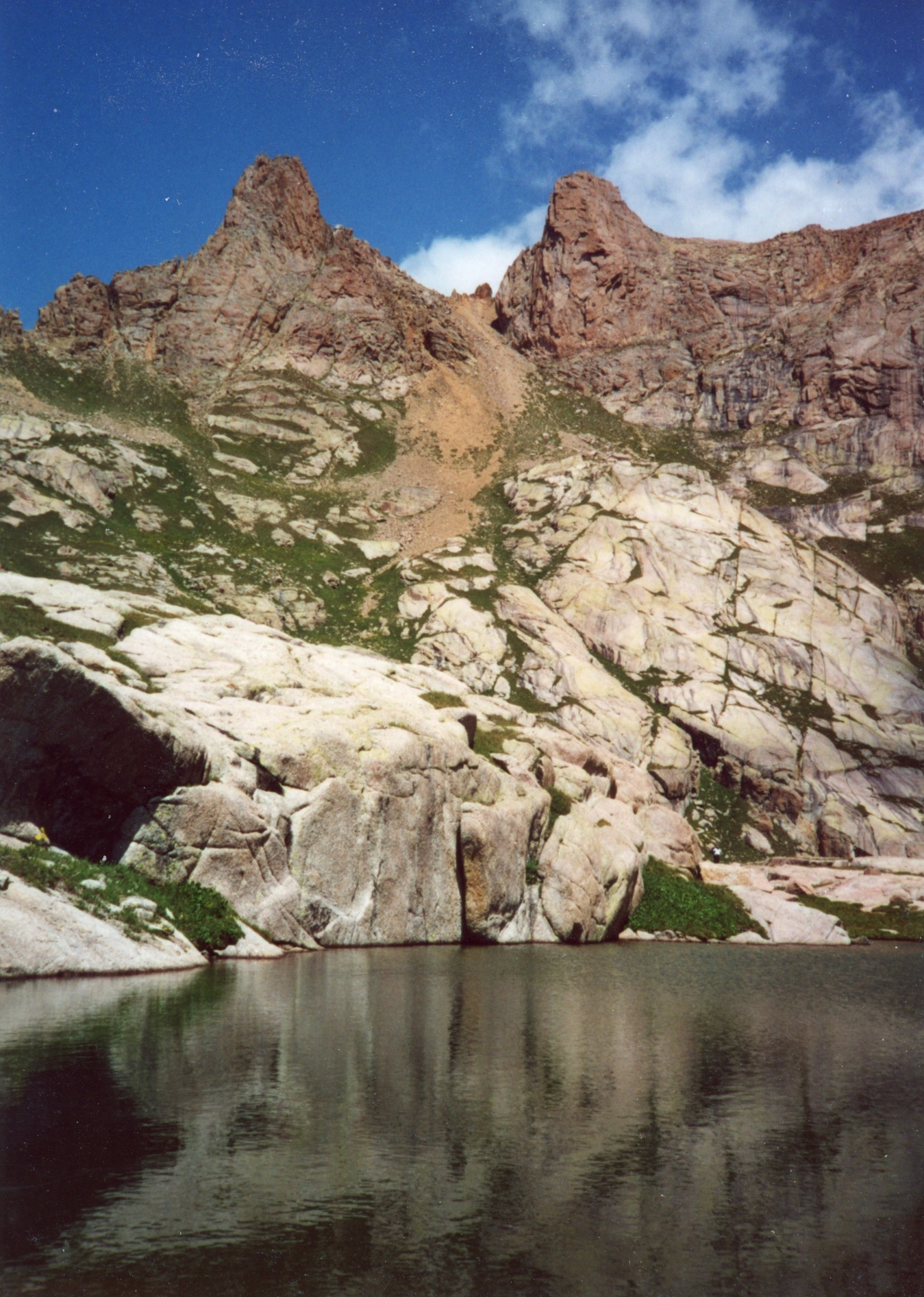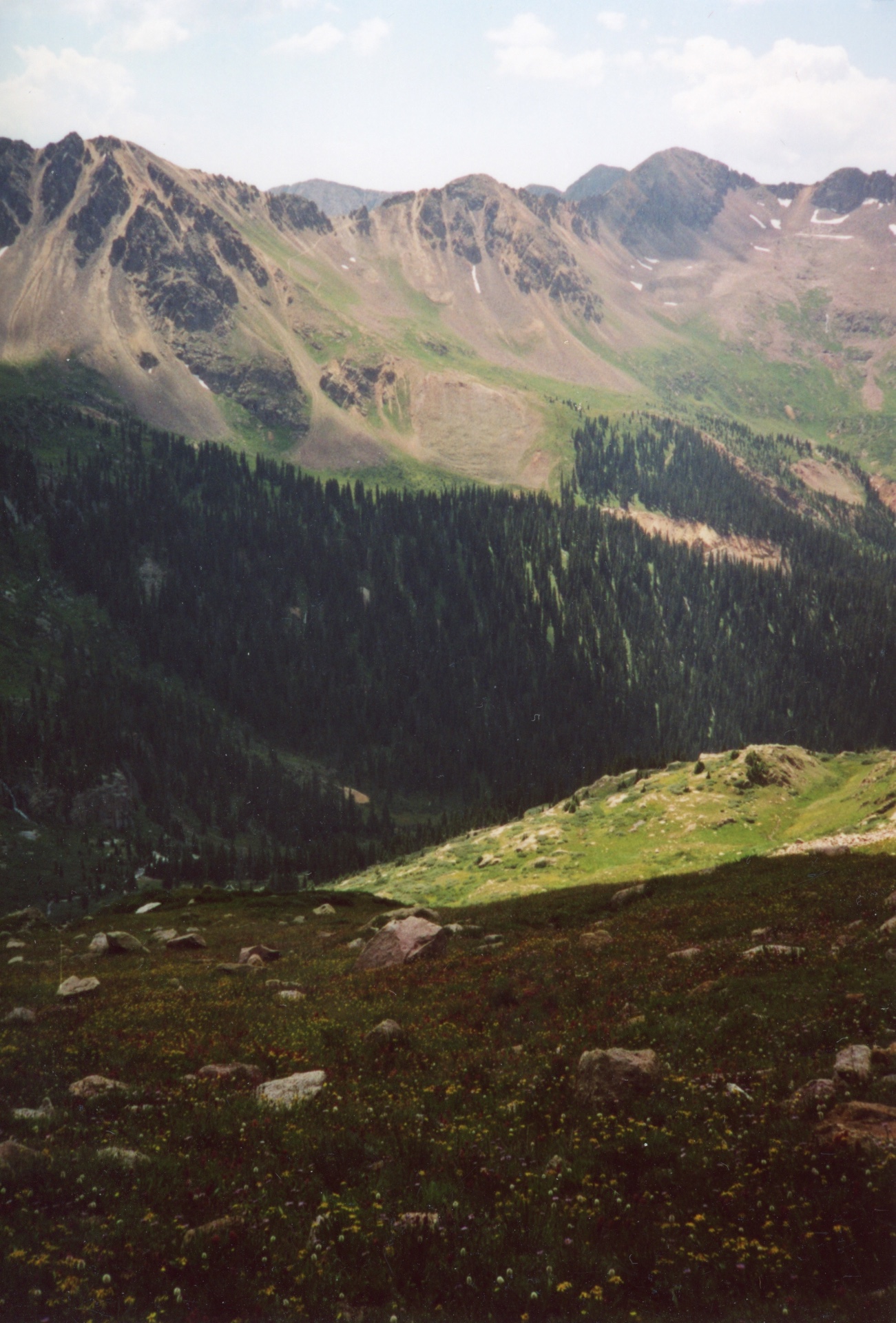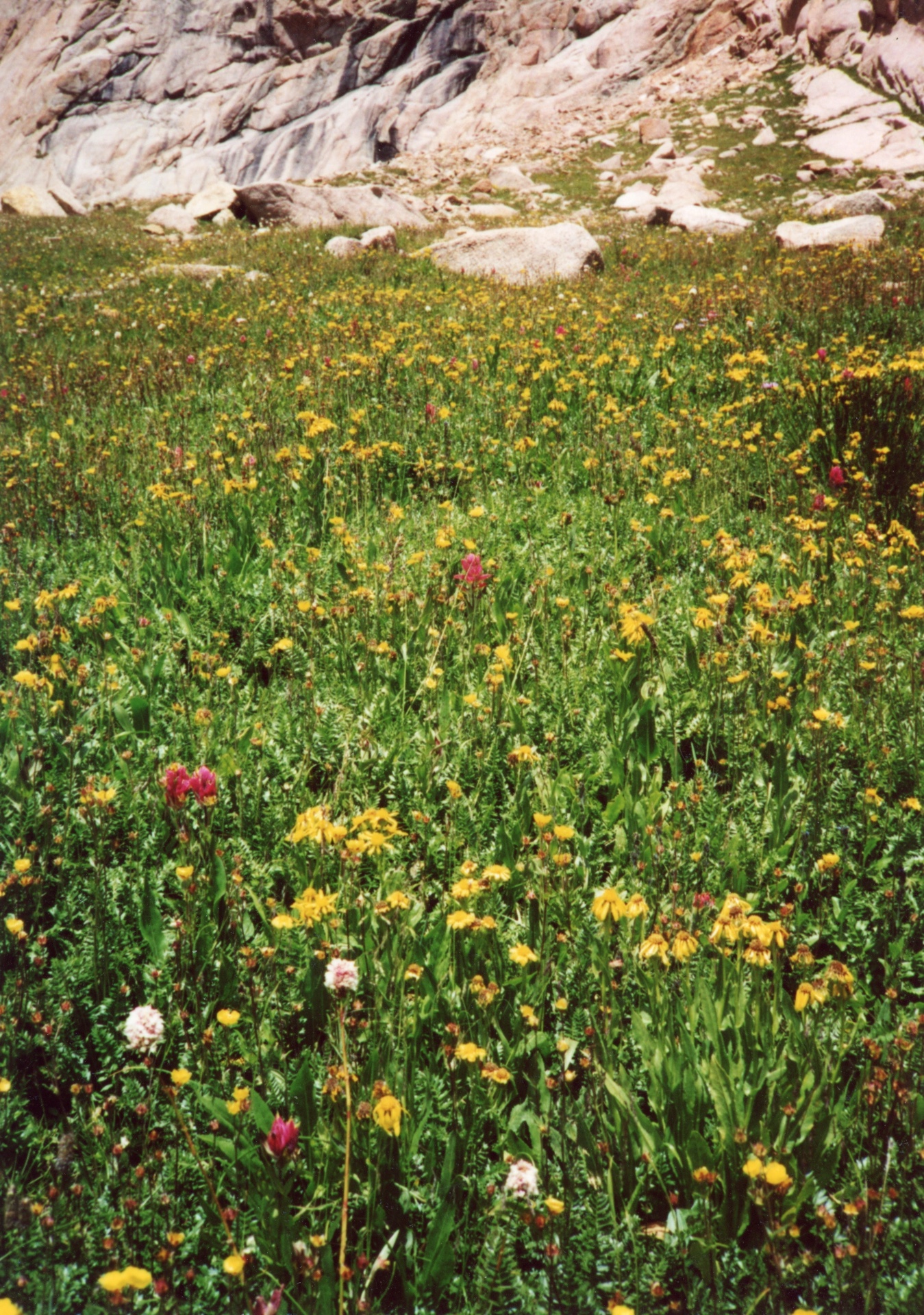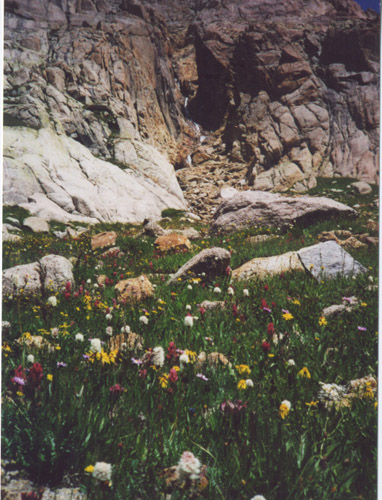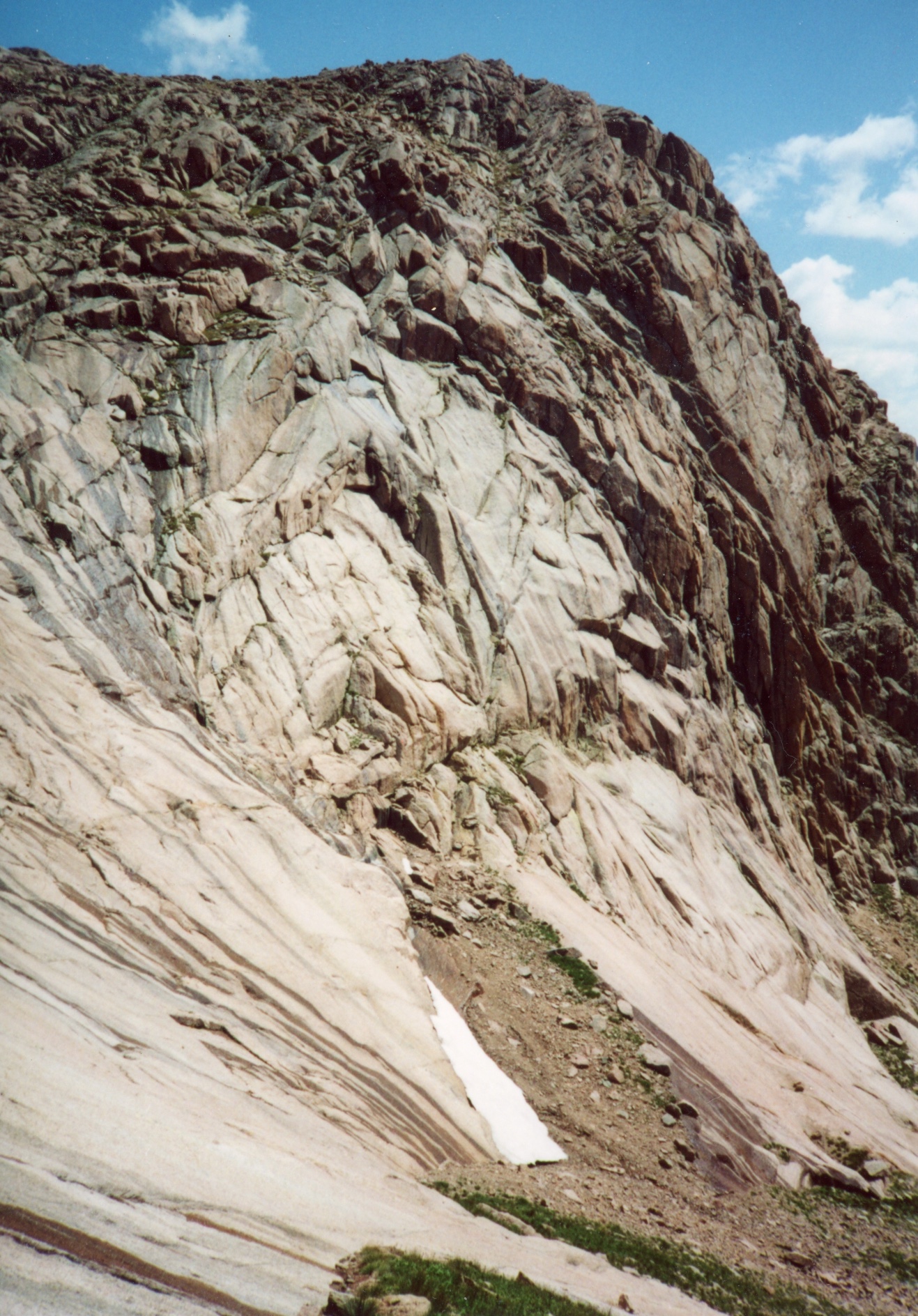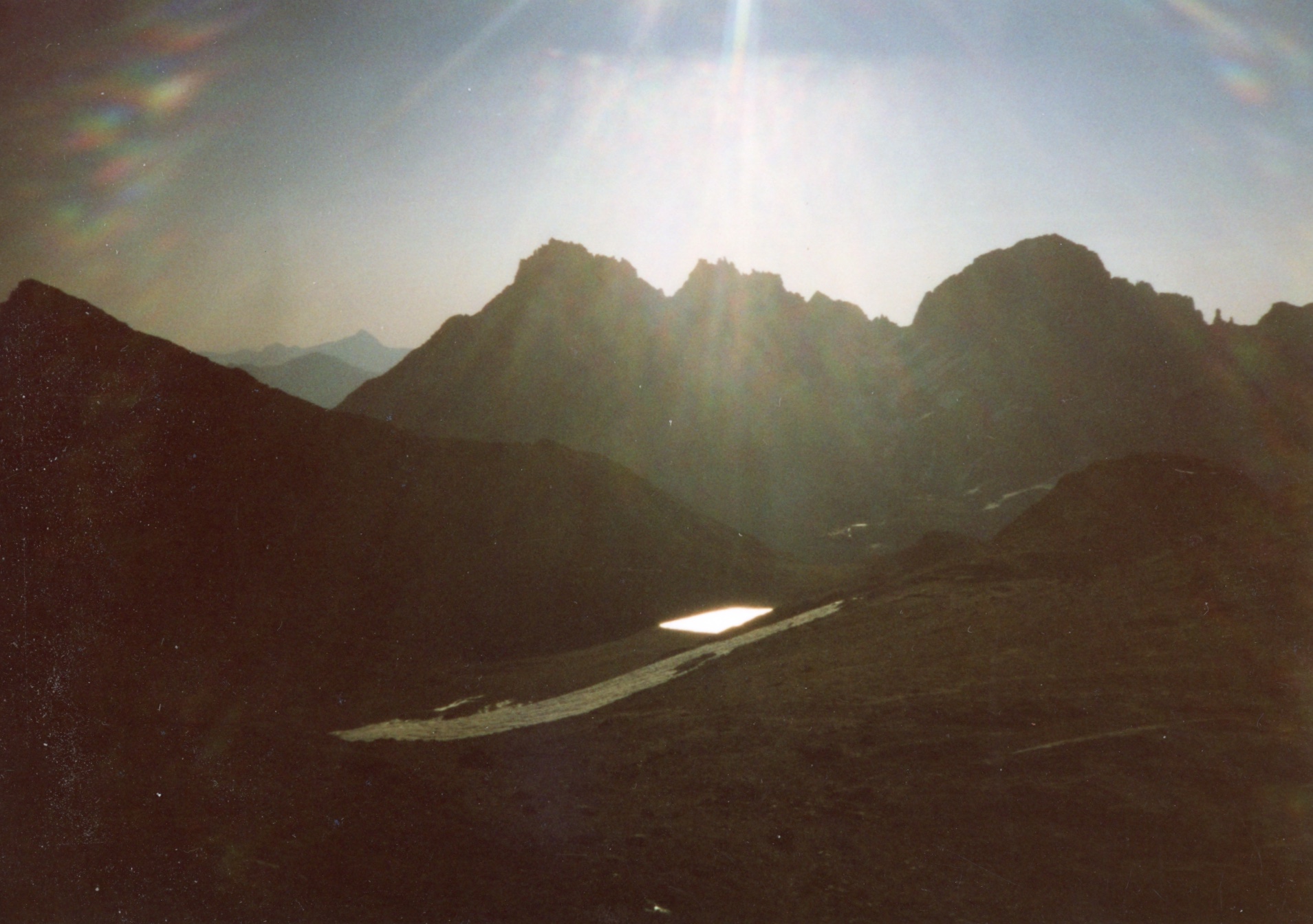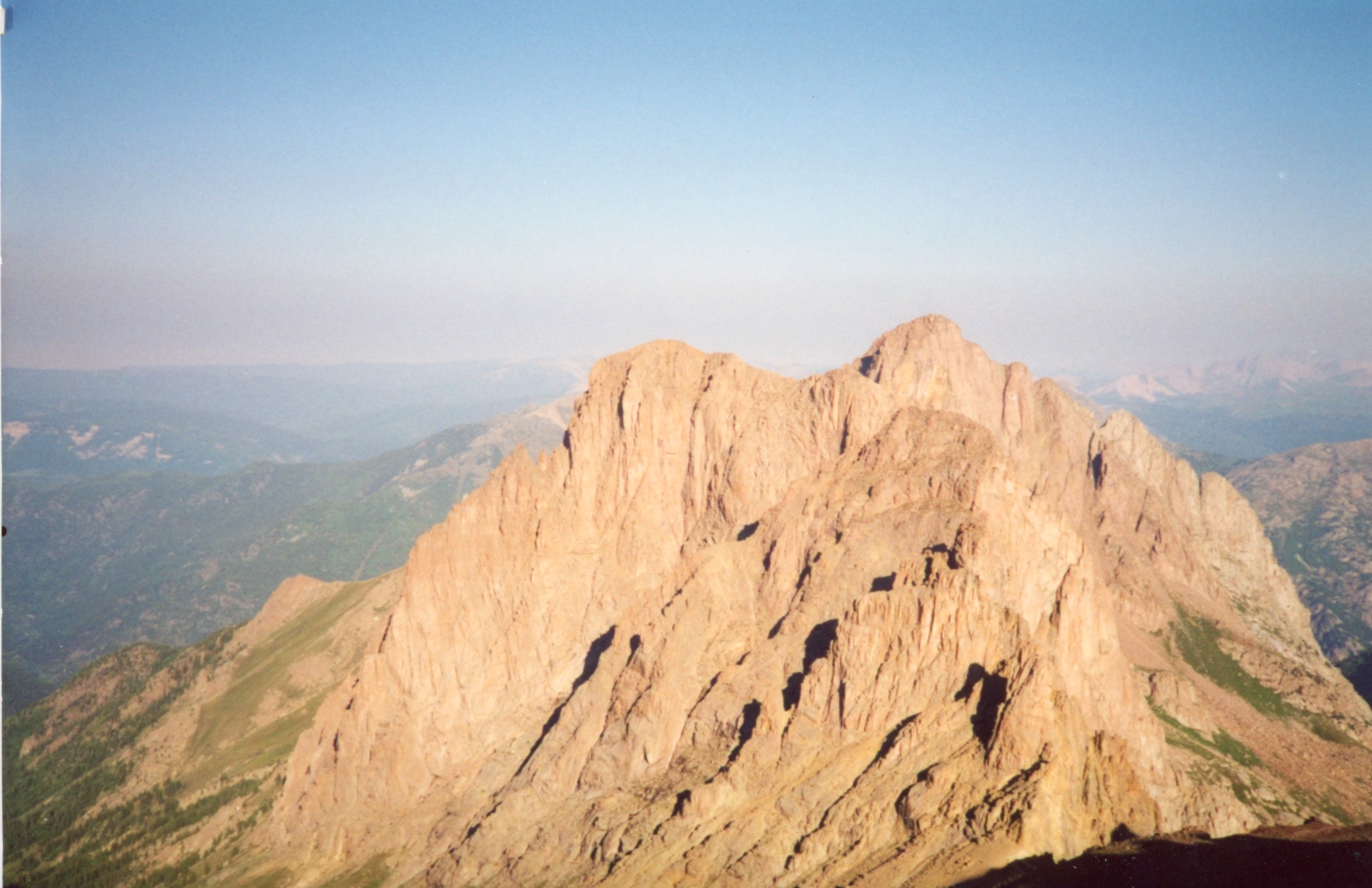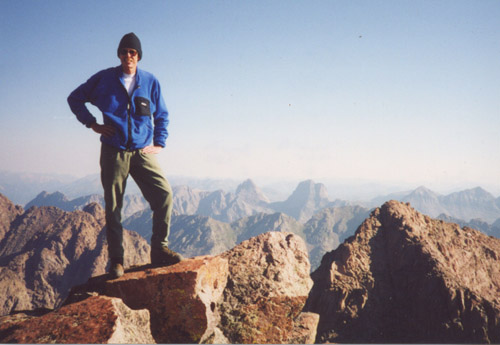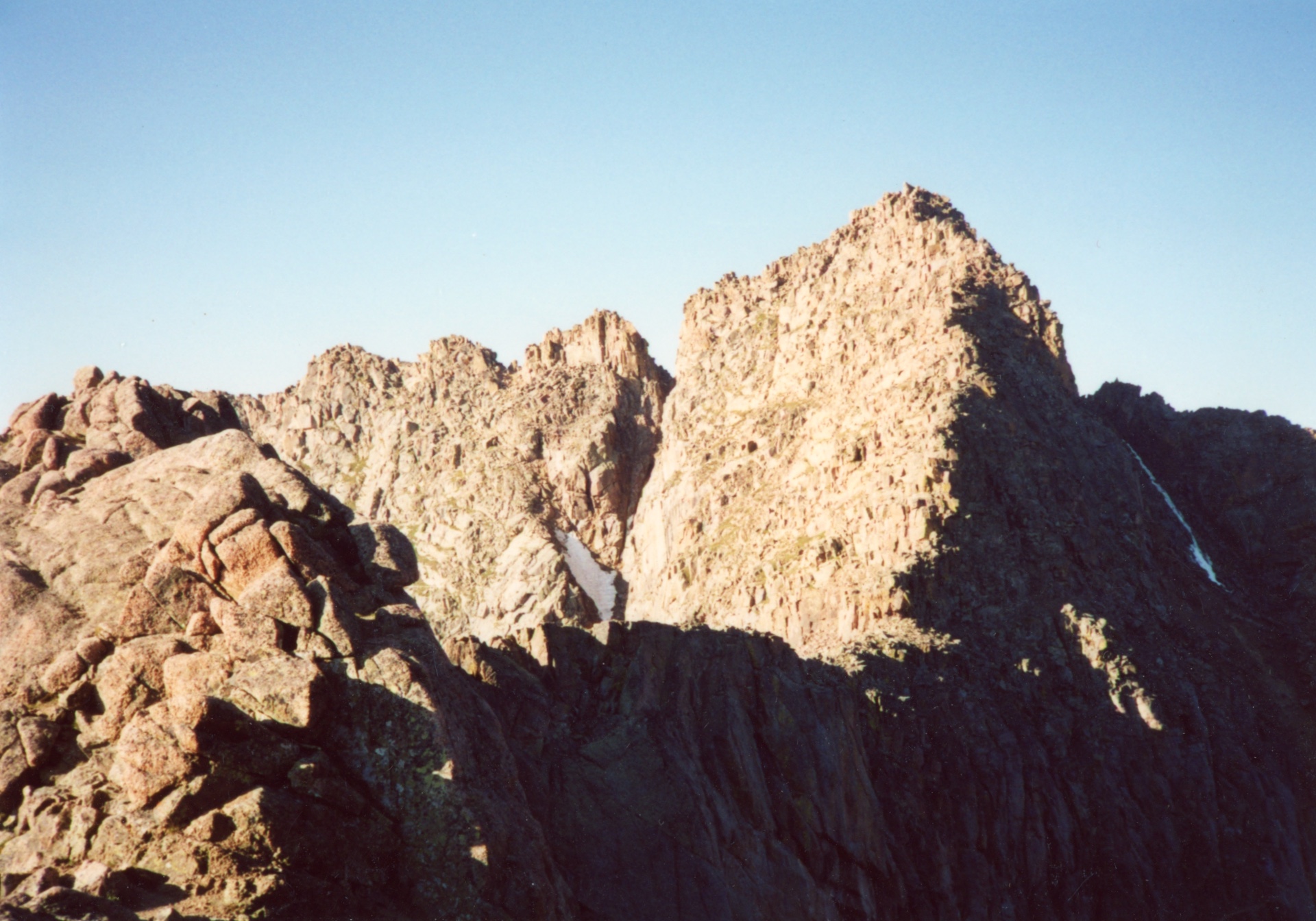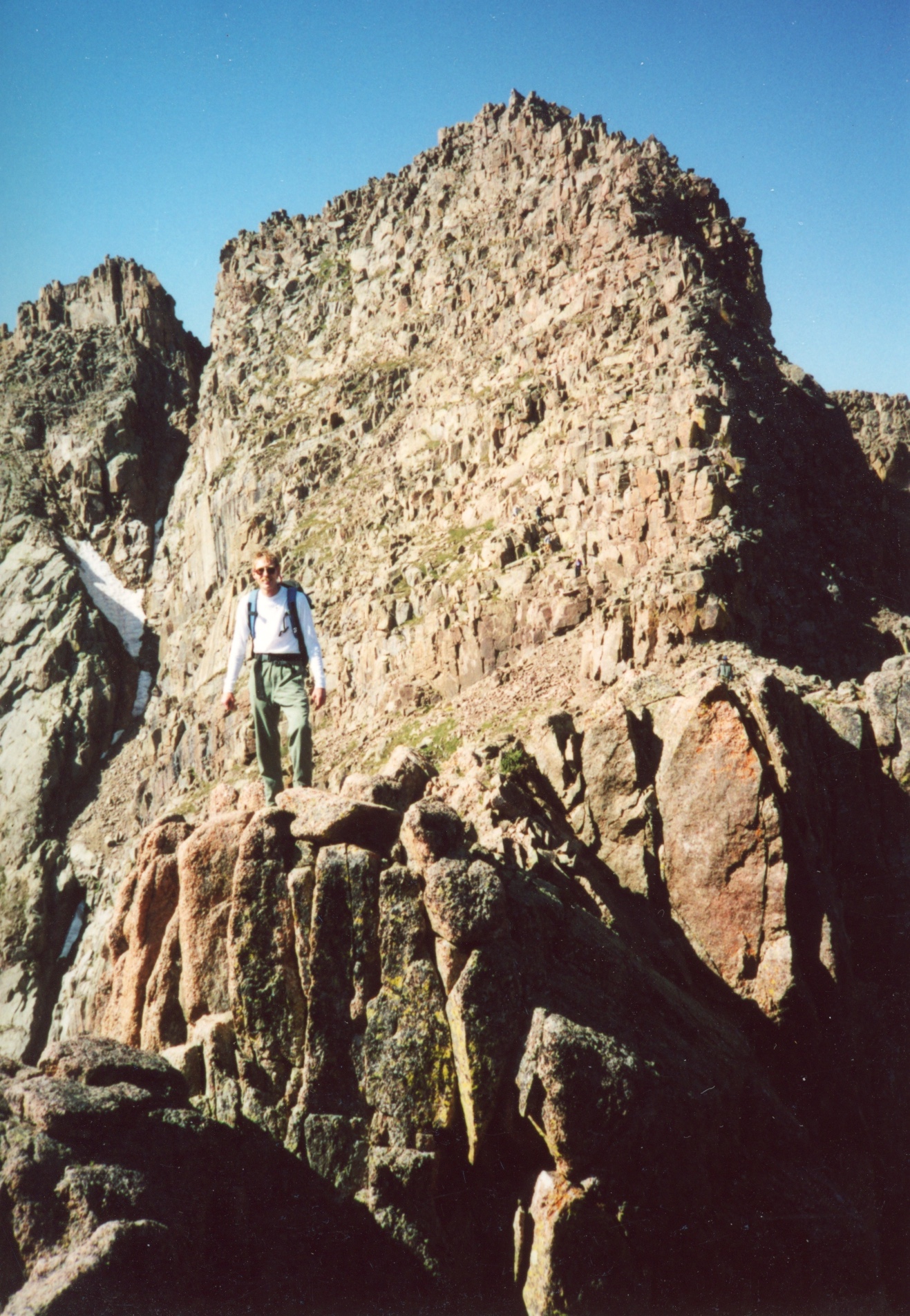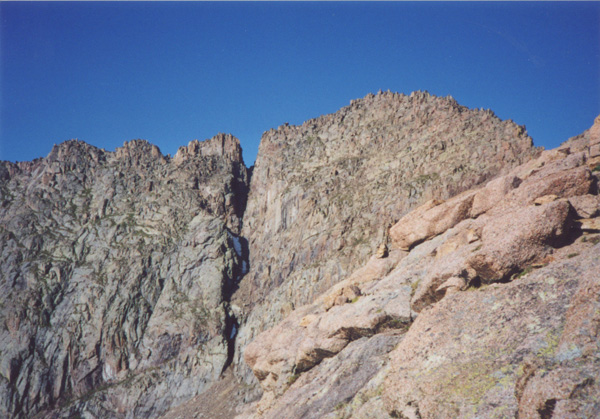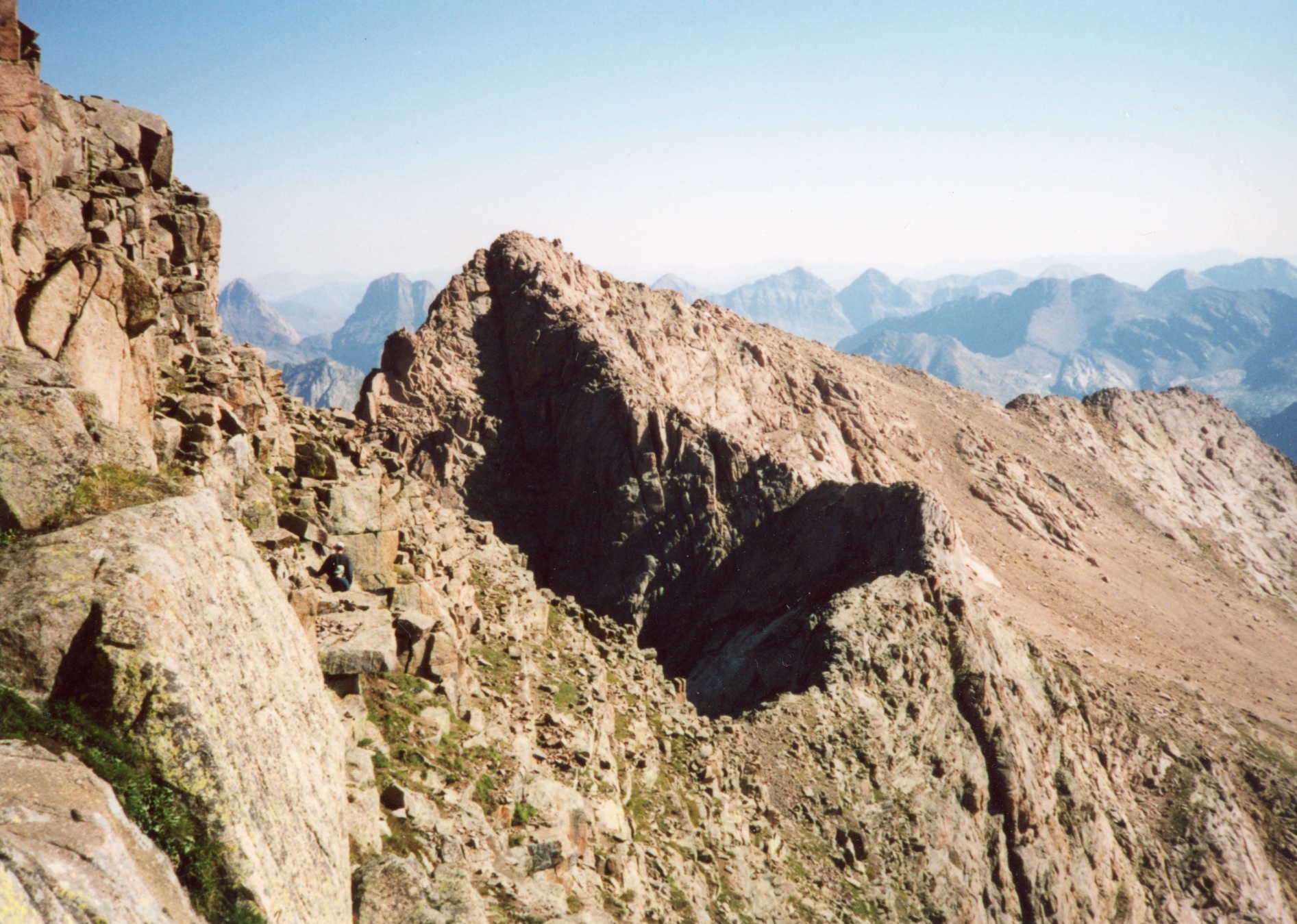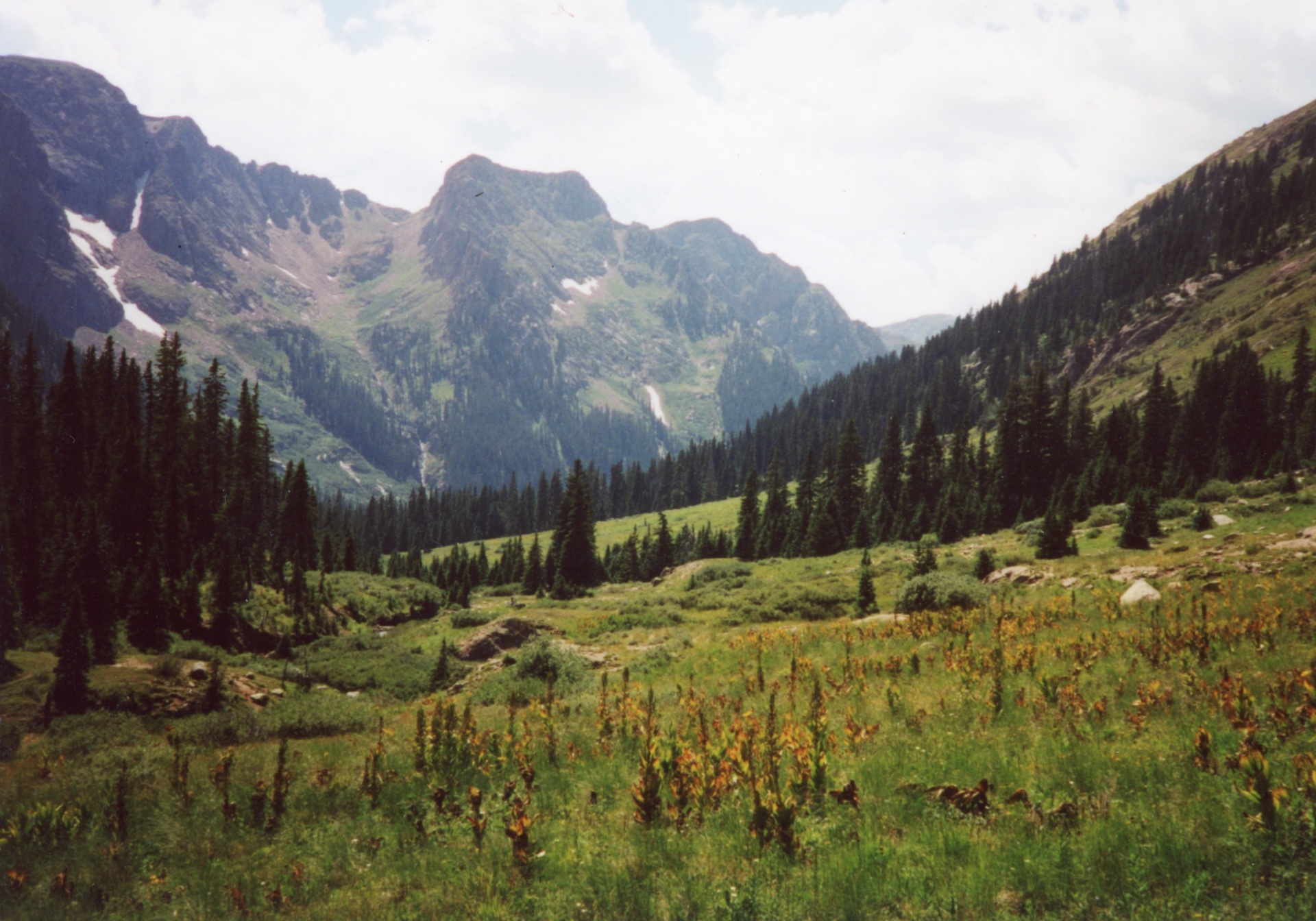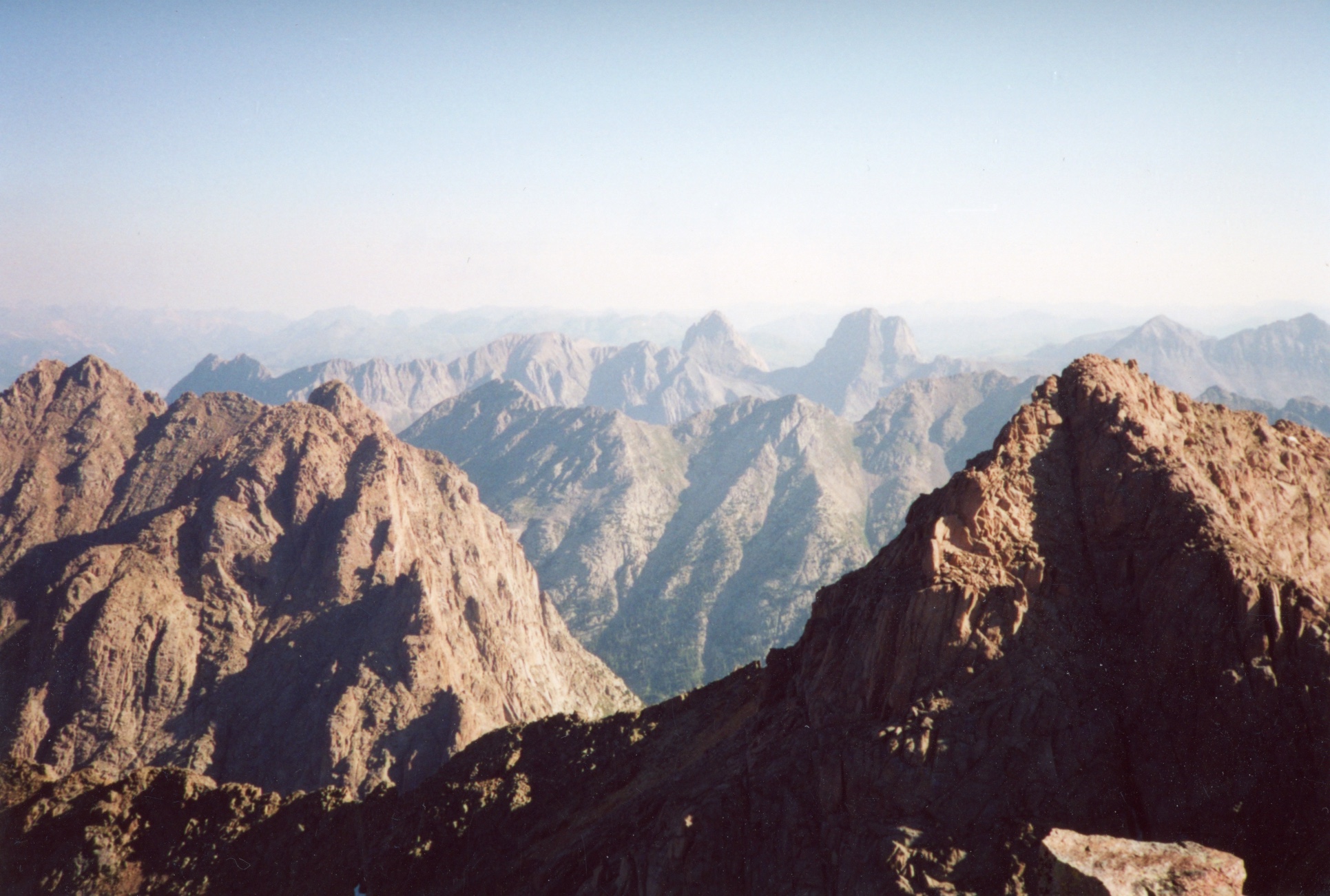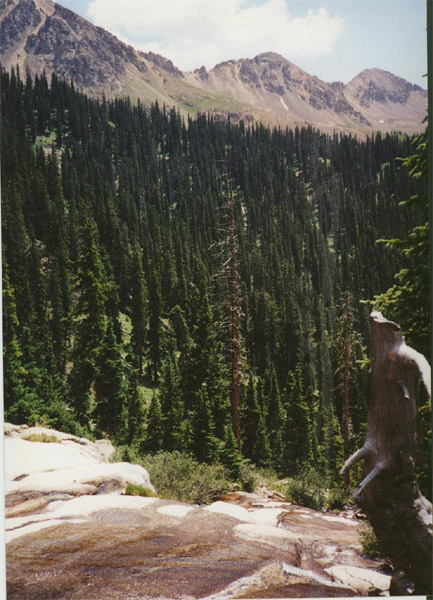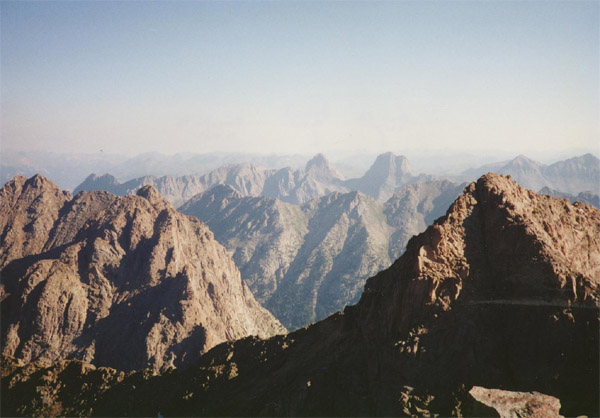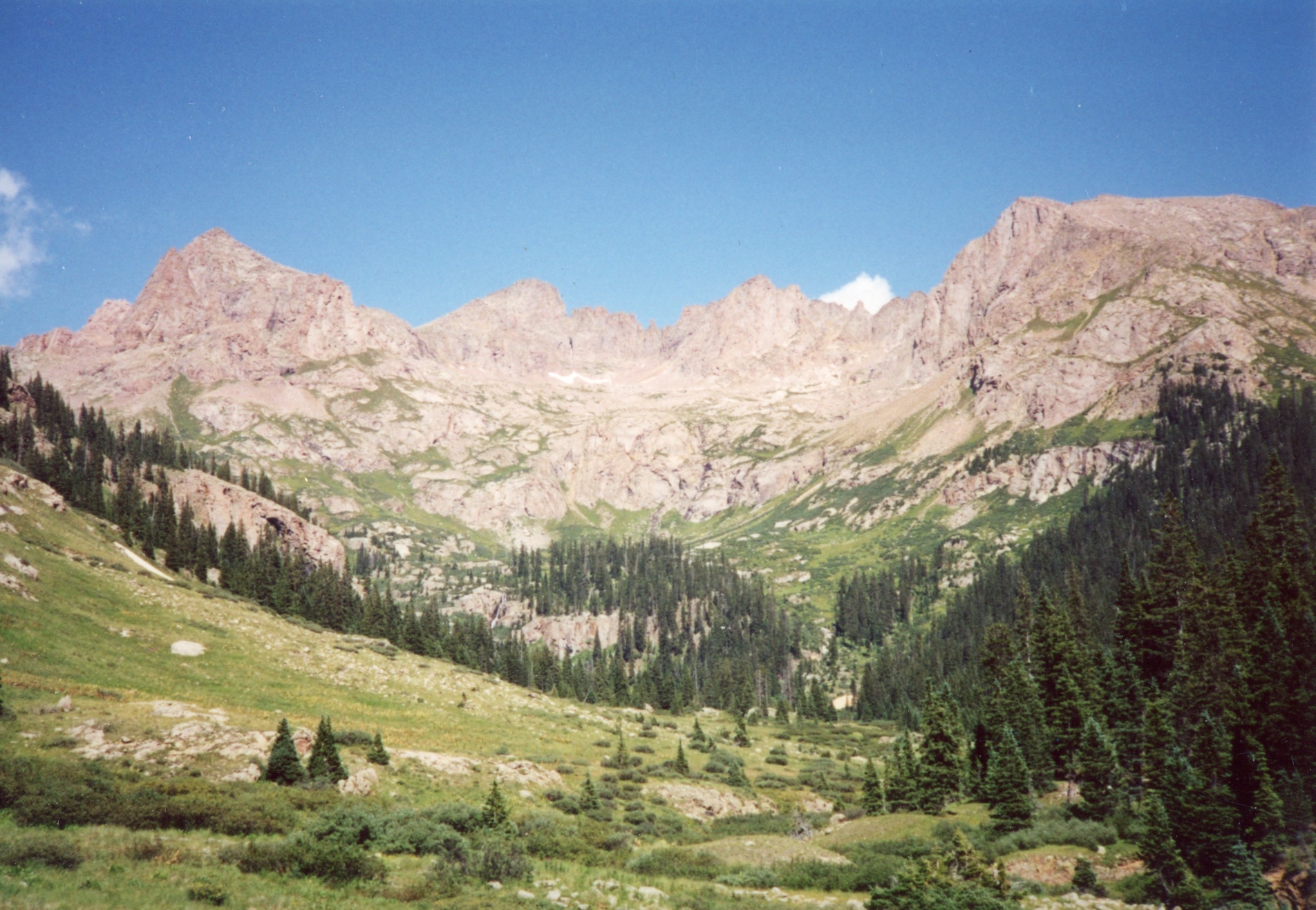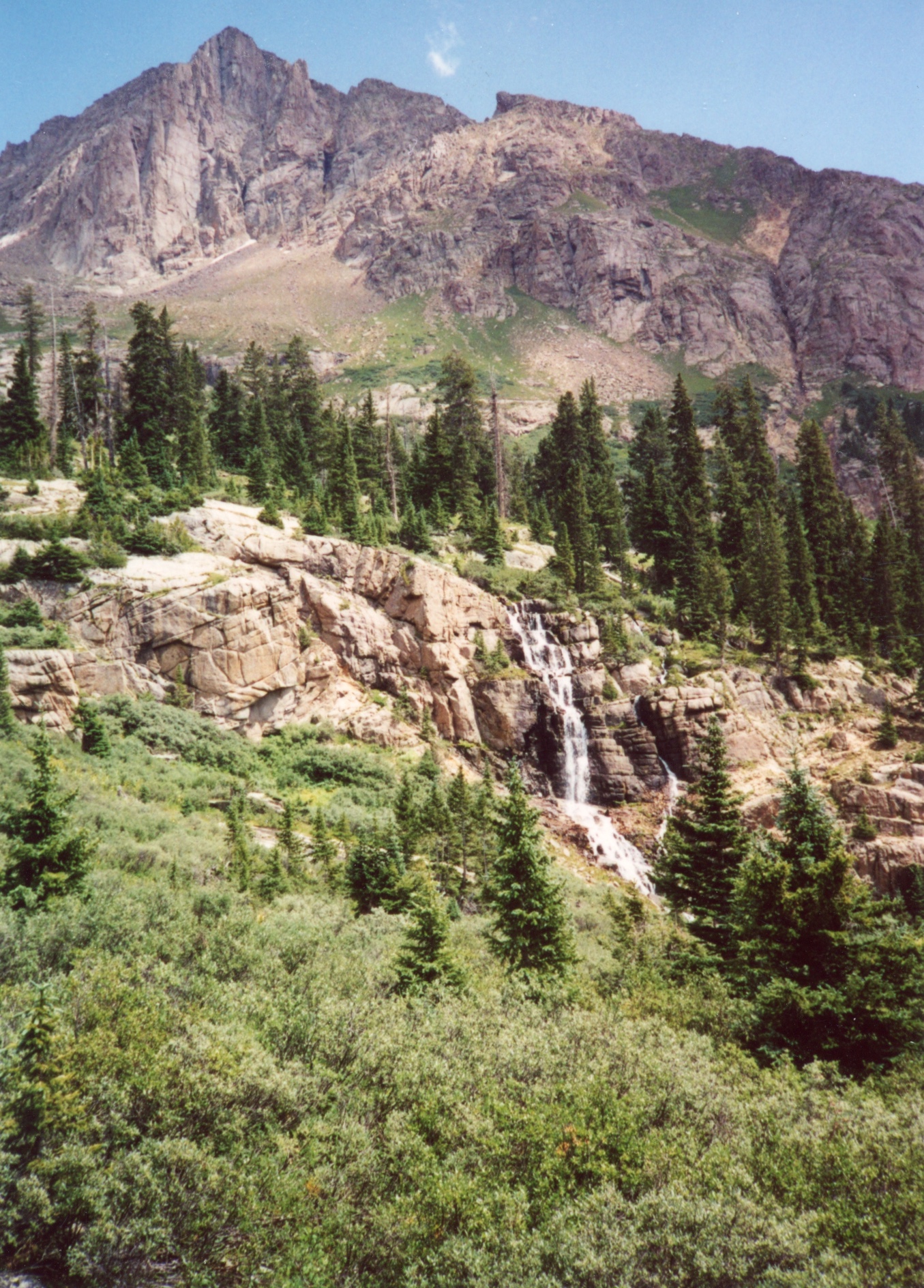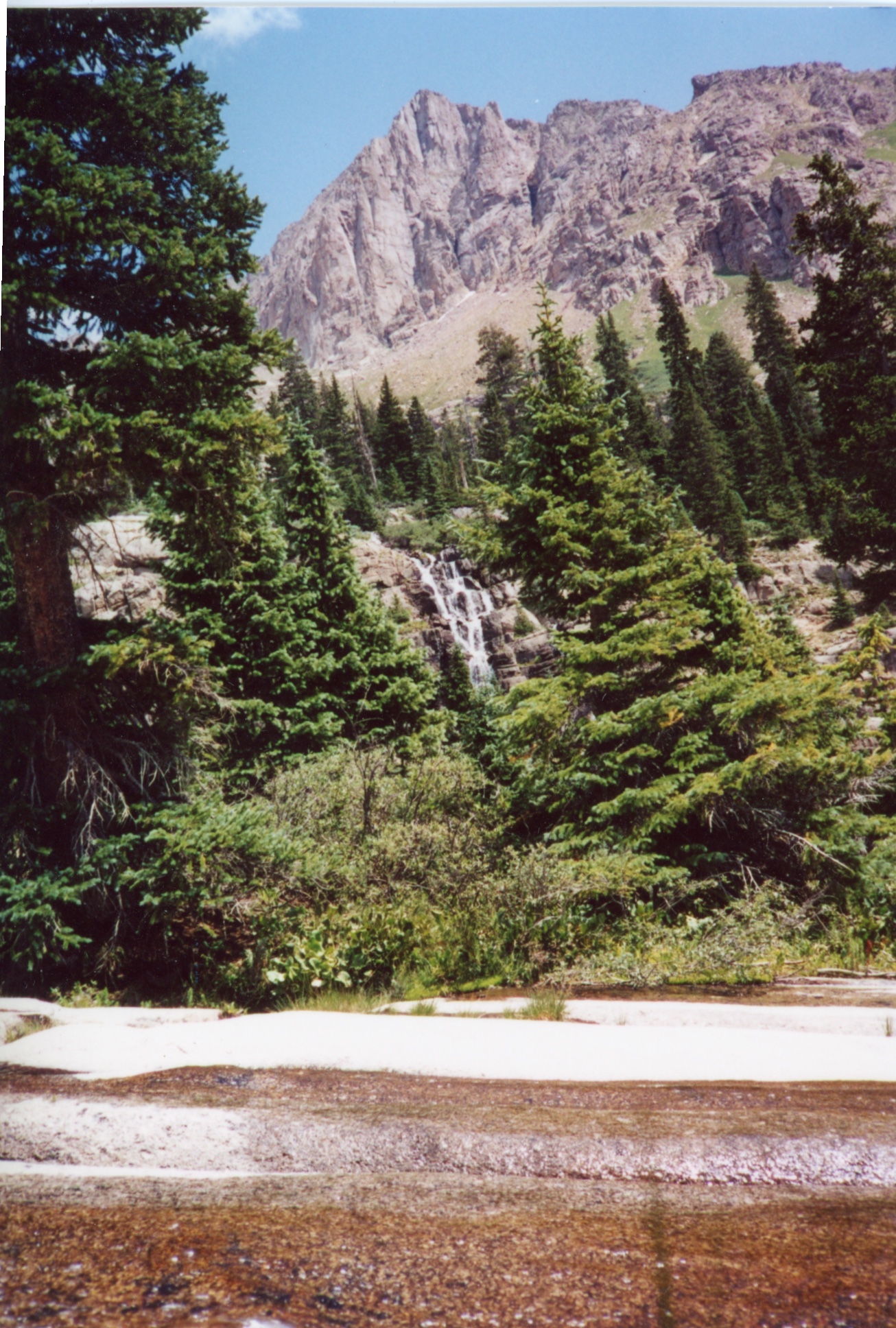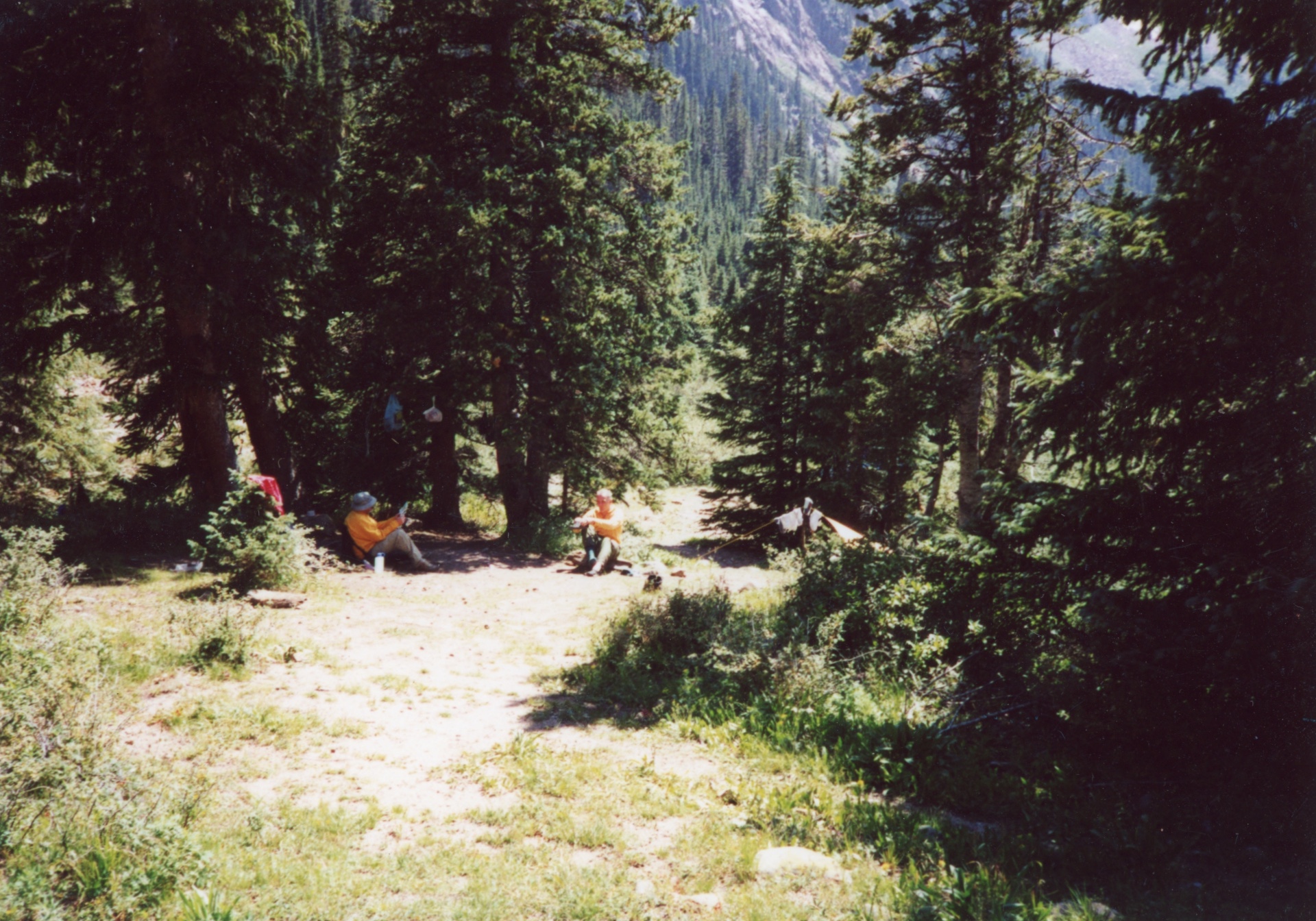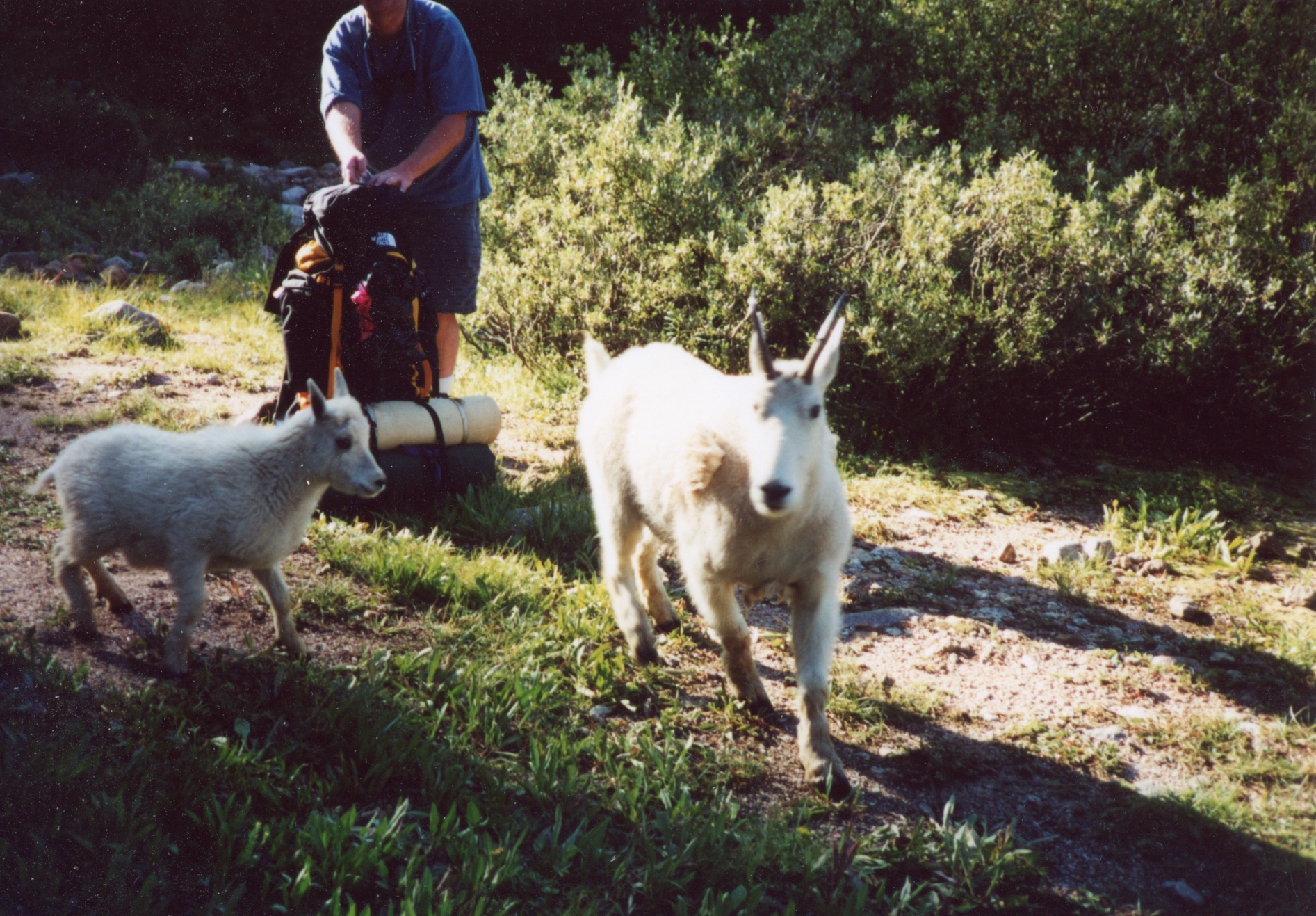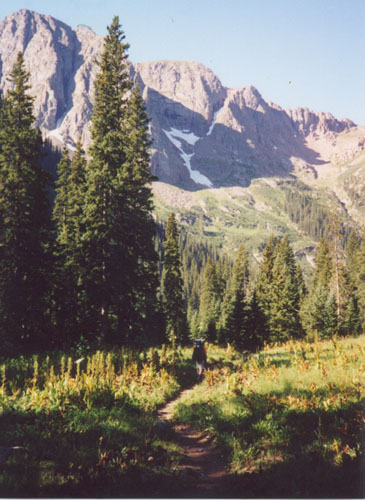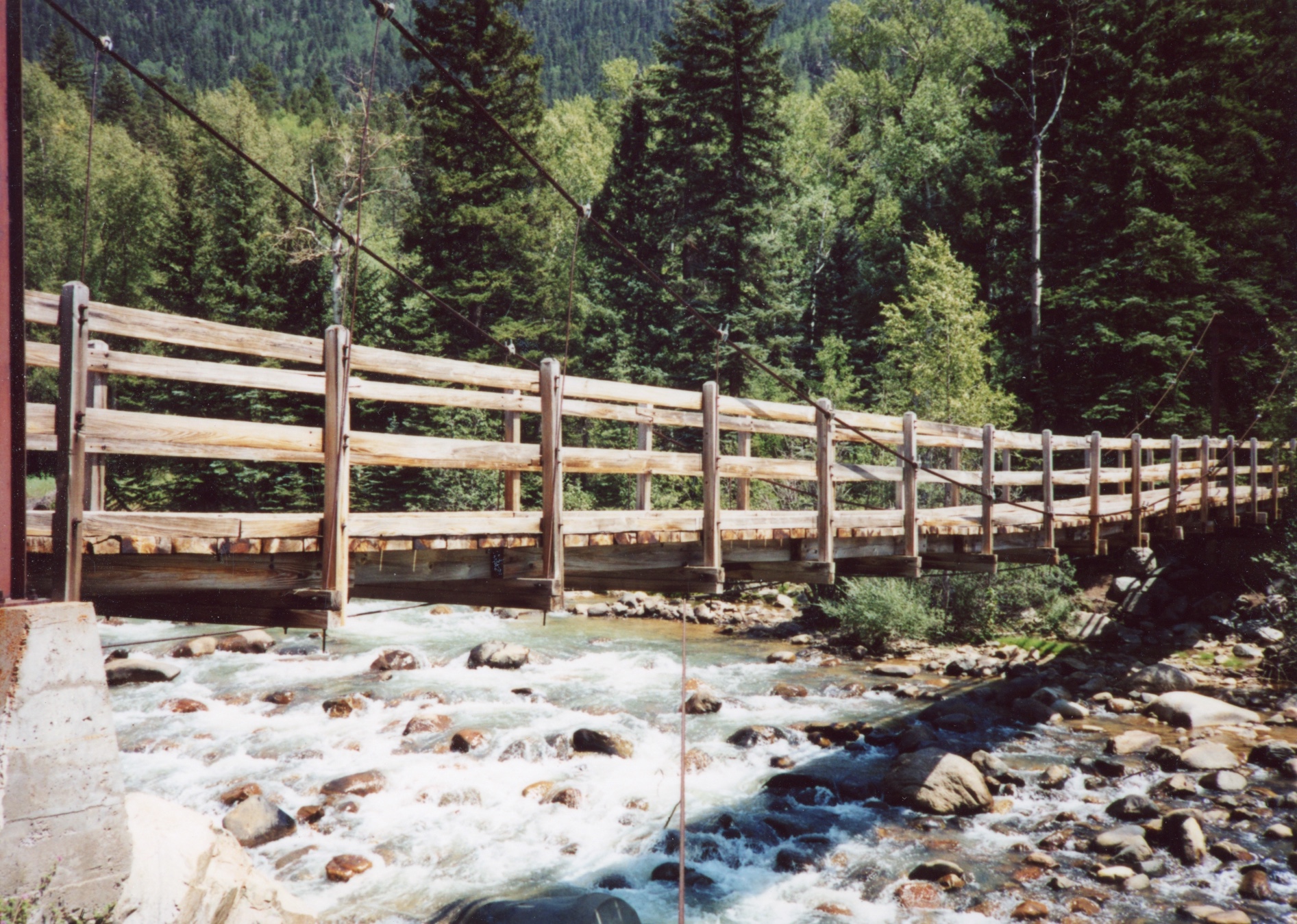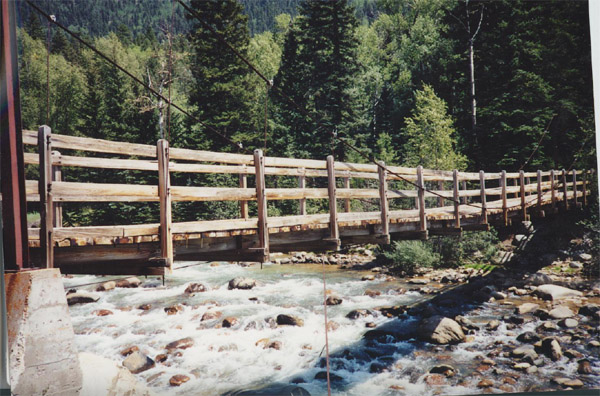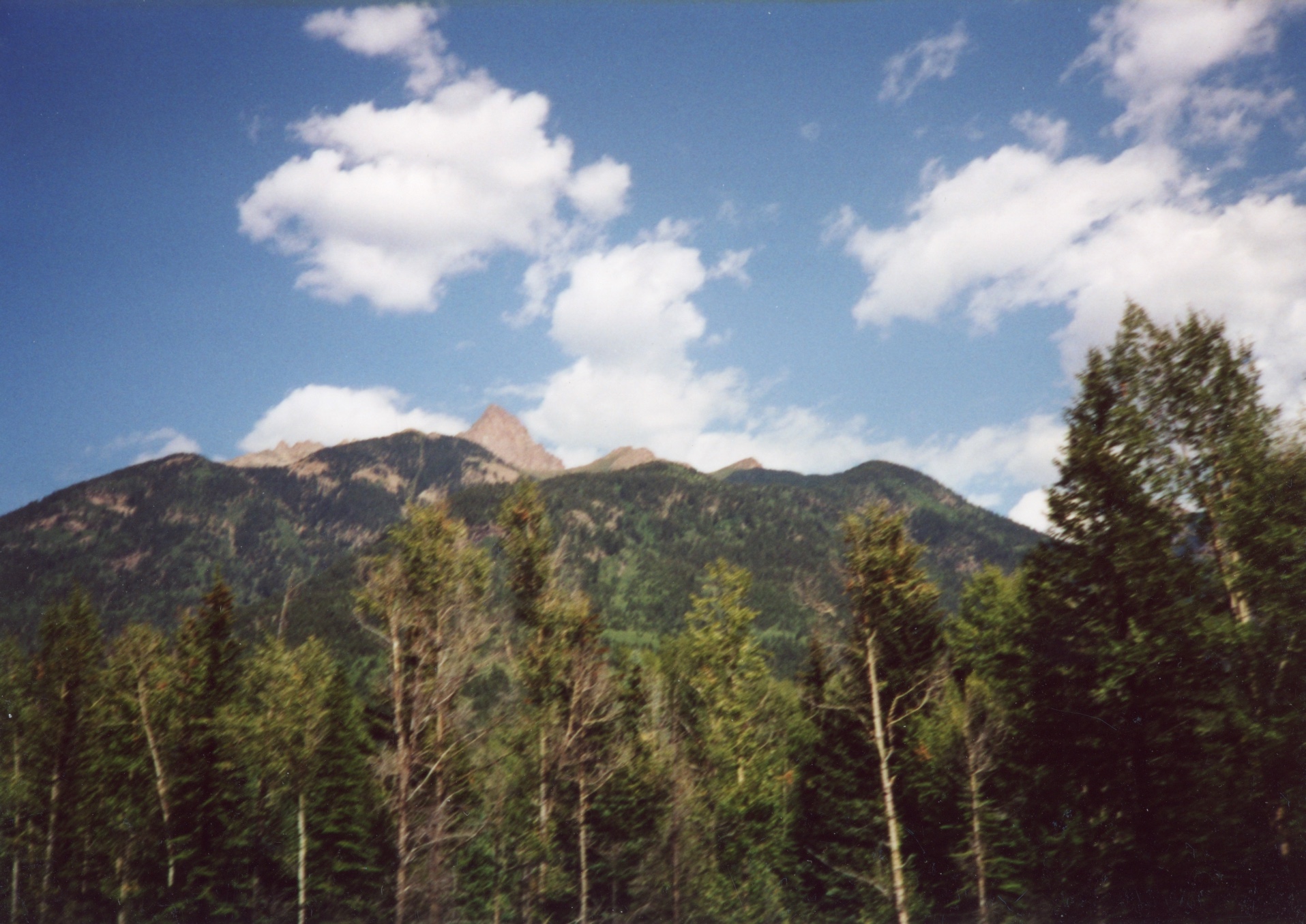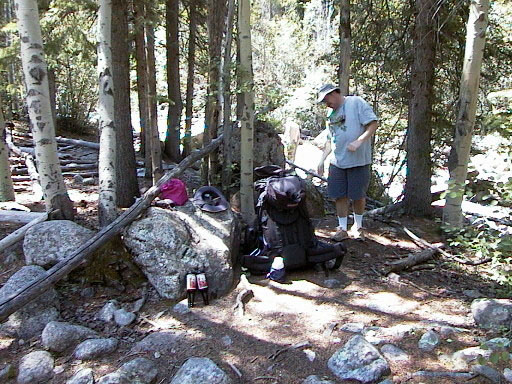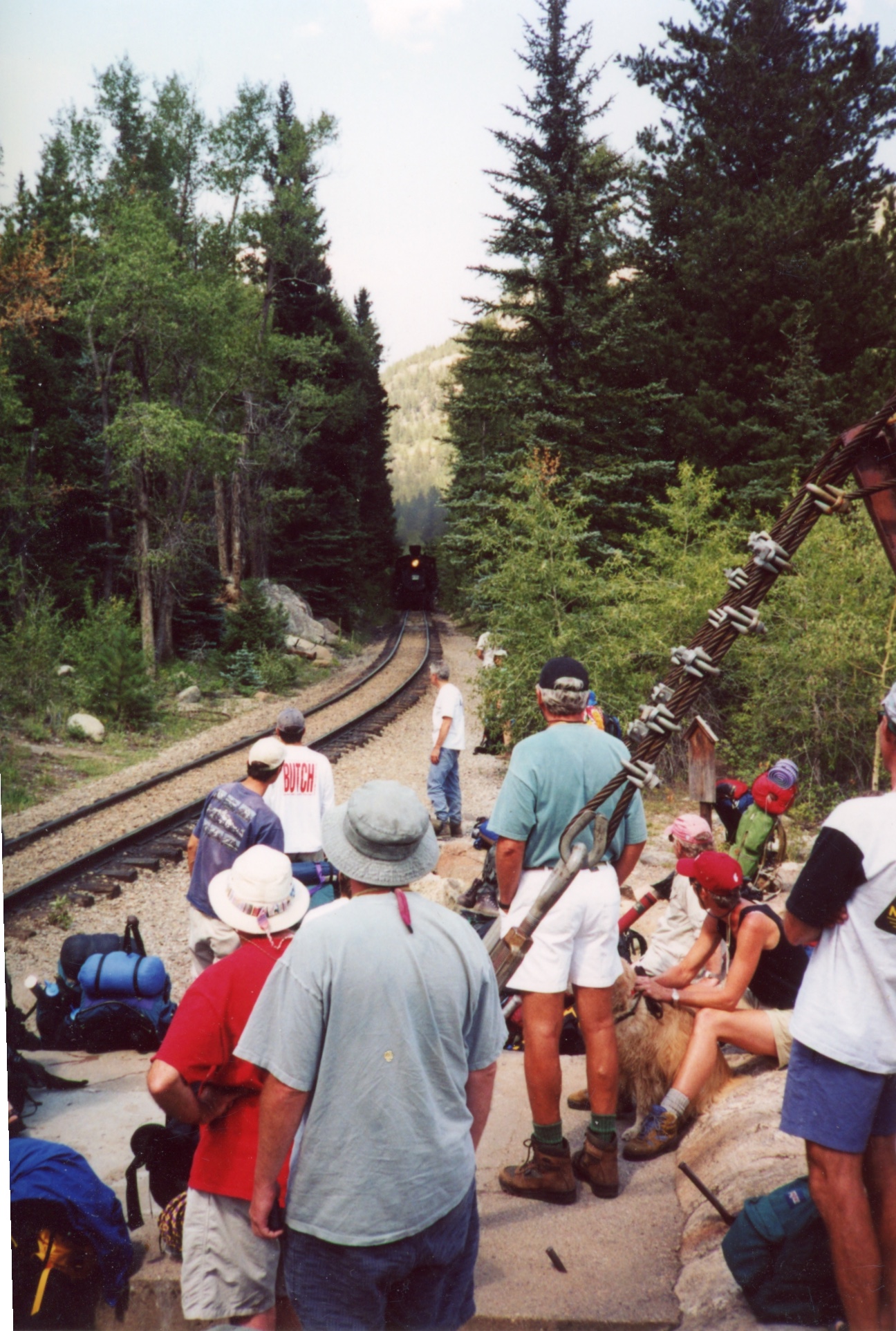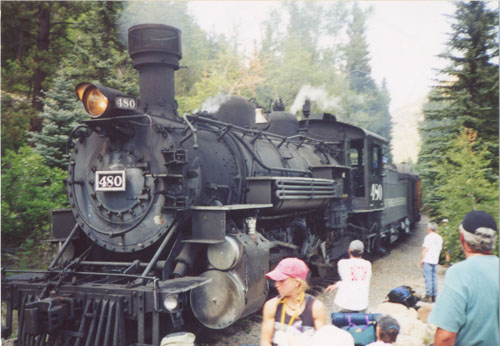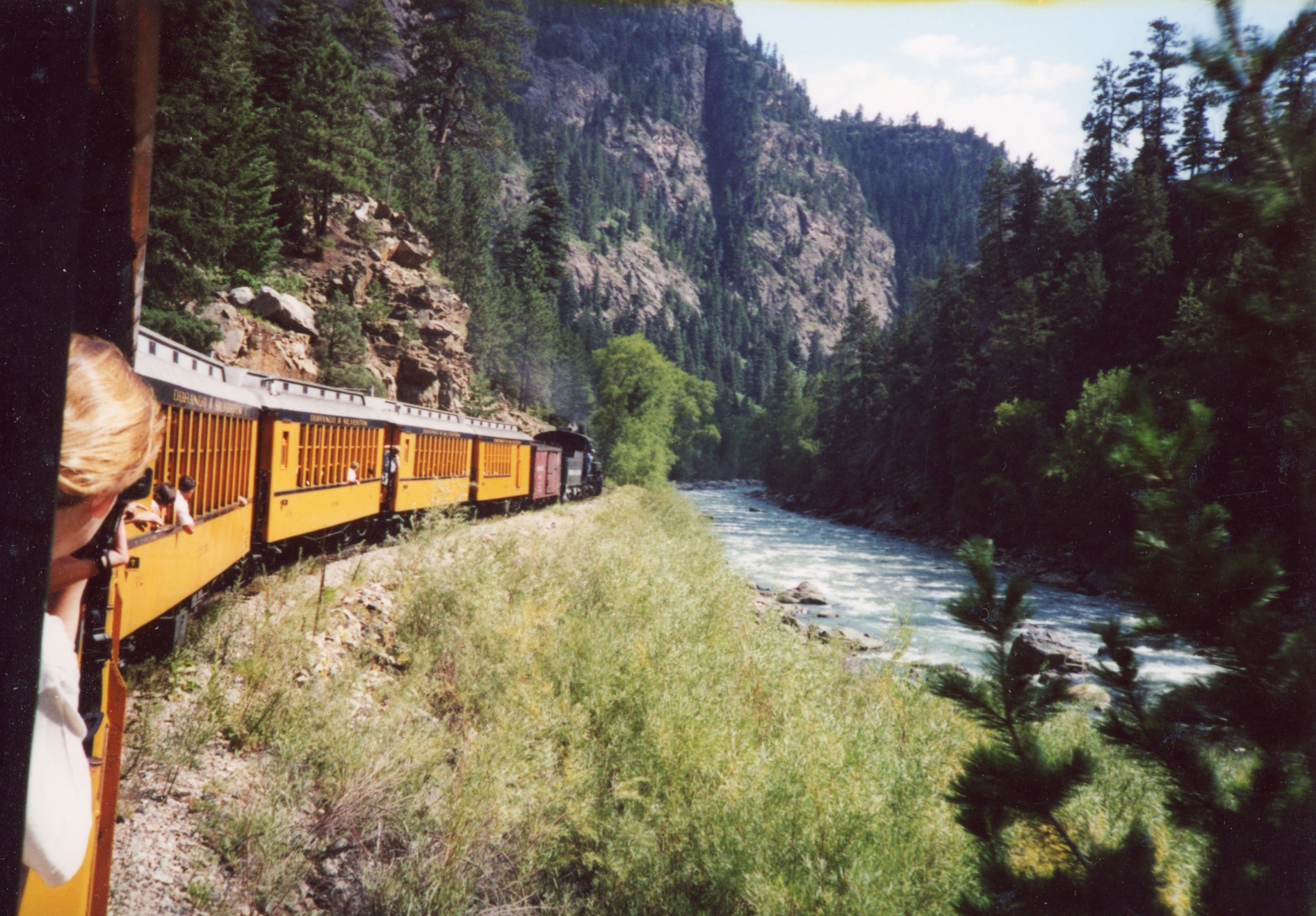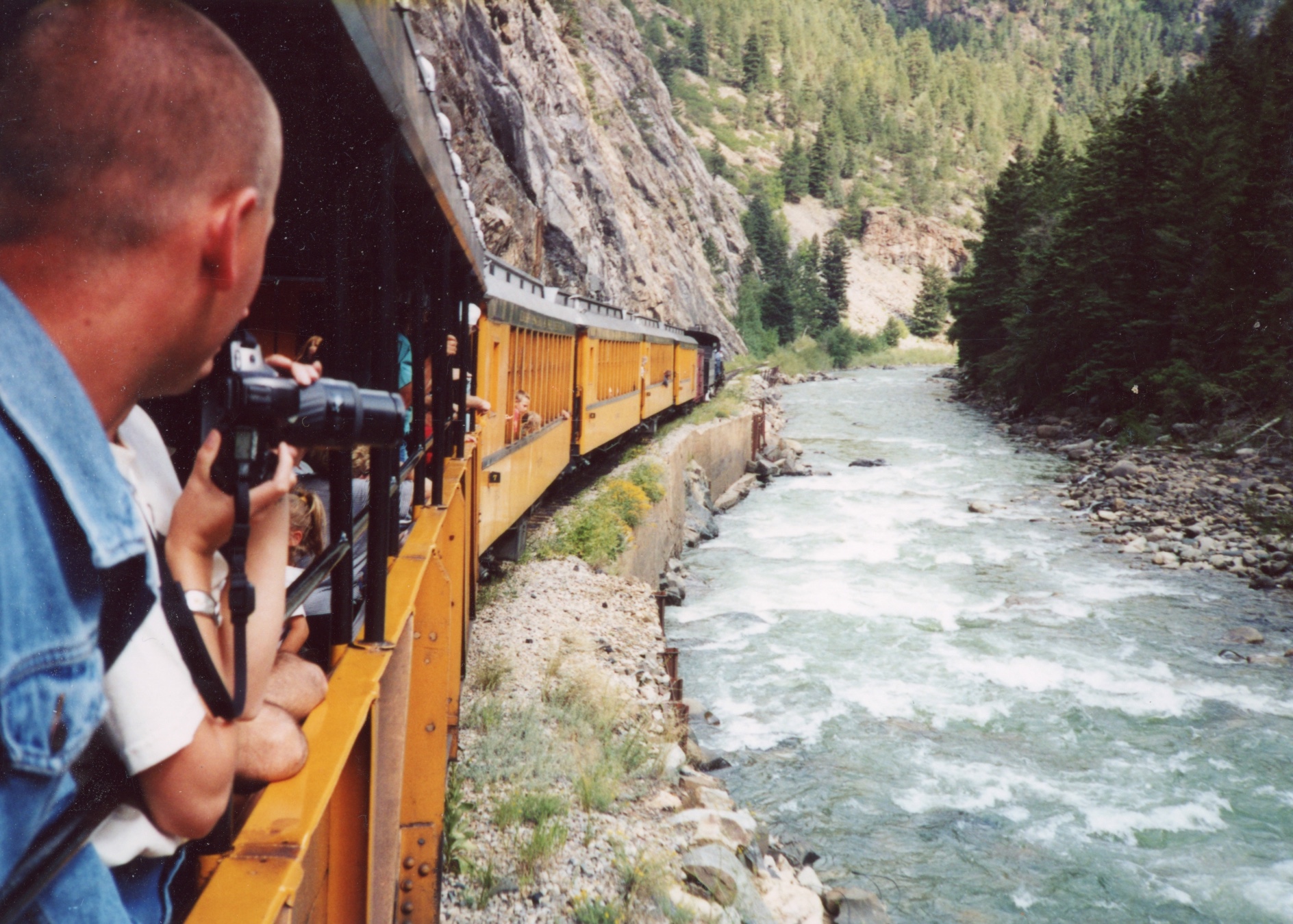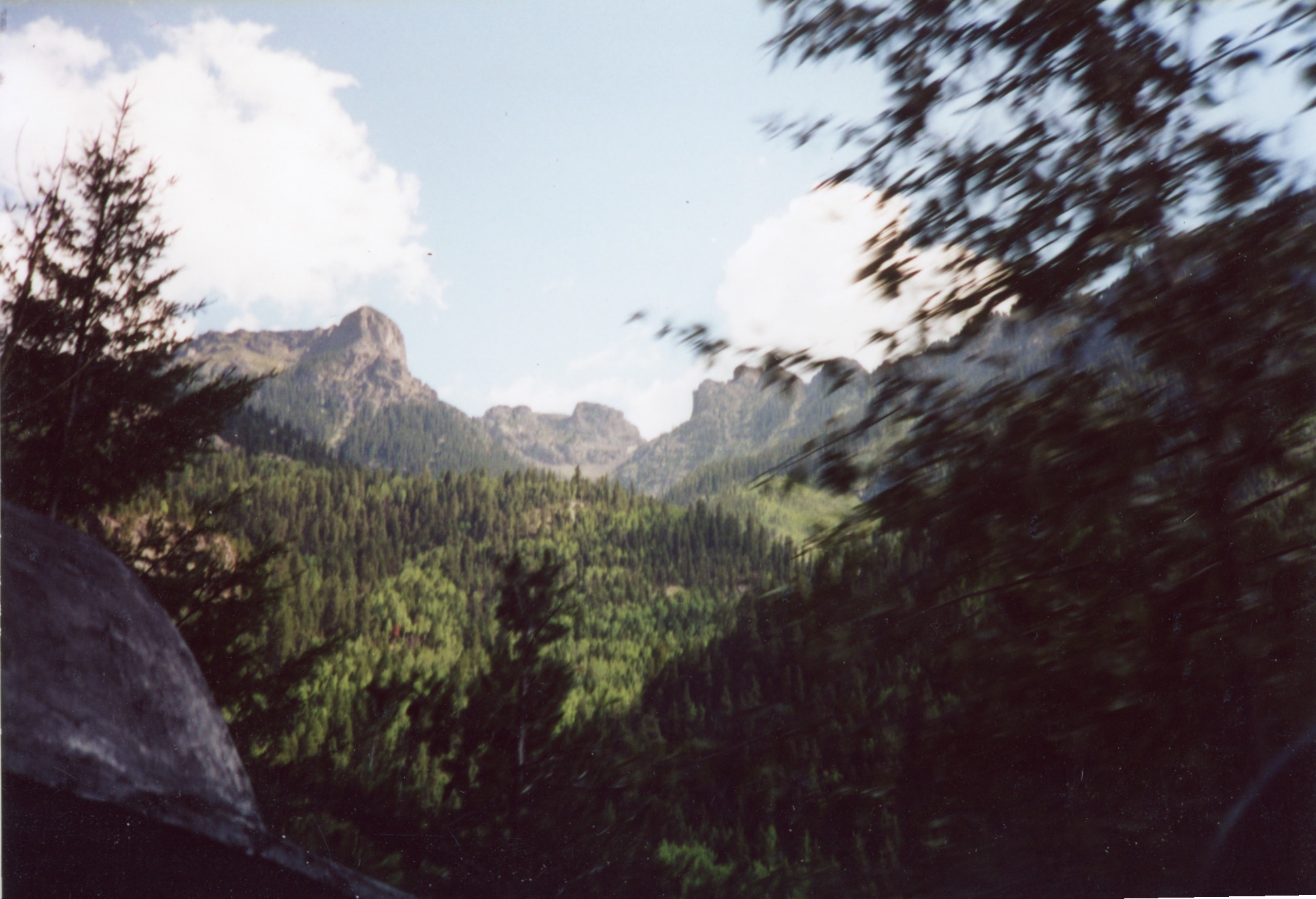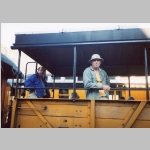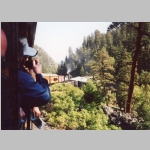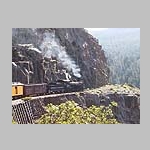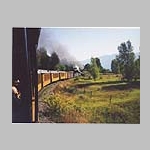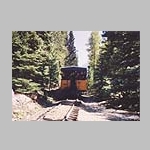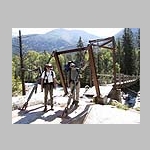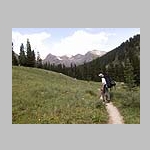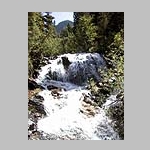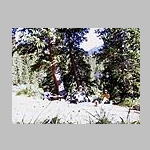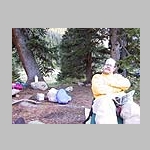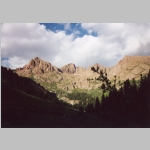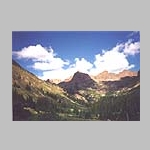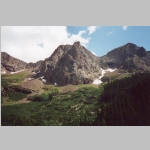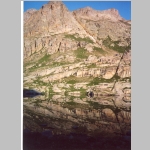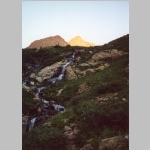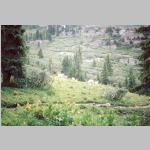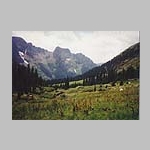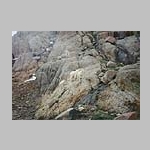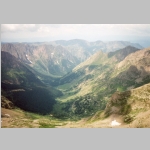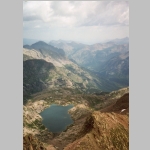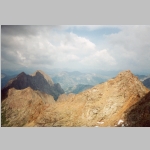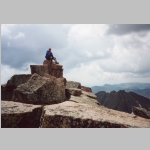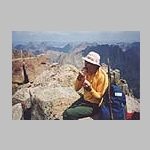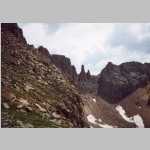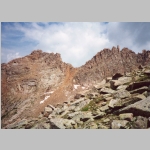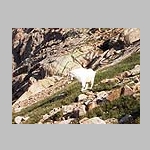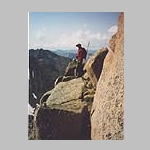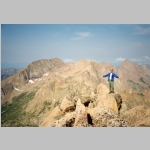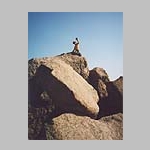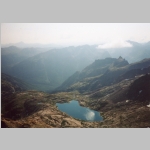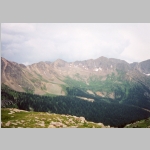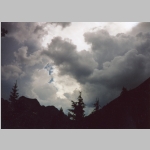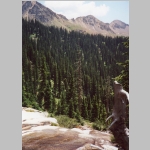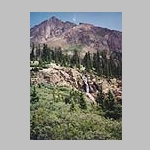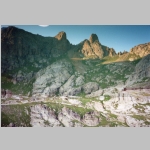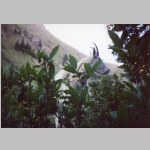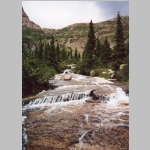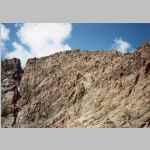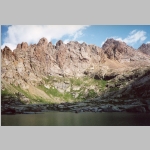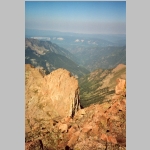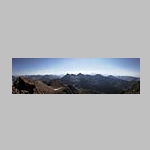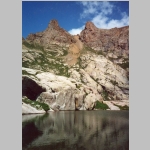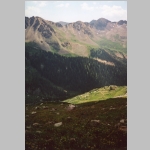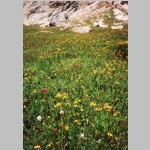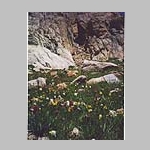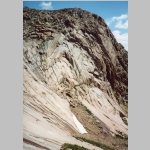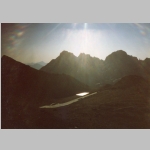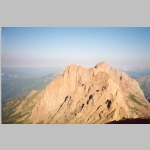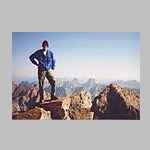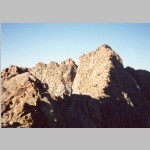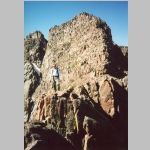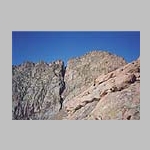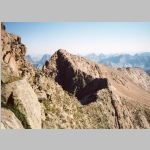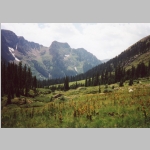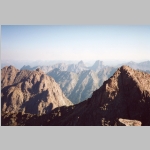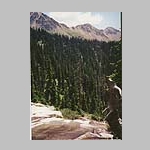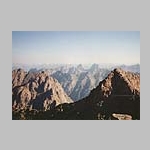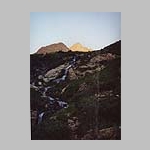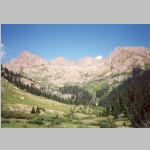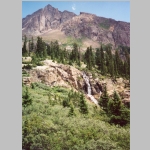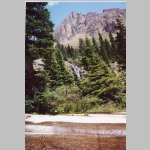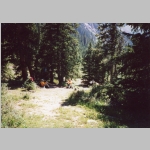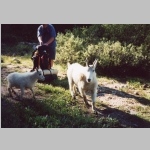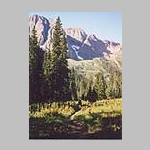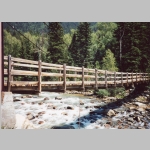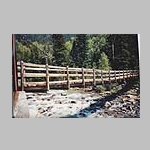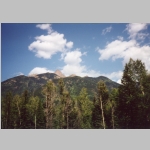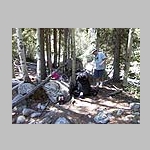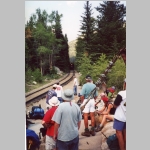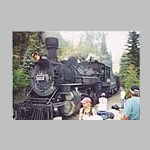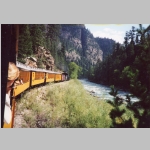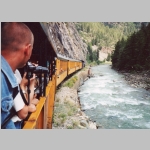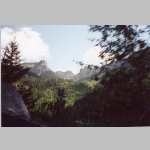Chicago Basin, Weminuche Wilderness, Colorado
August 15 to 18, 2001
"For mining I cannot say much good except that its operations are generally short-lived. The extractable wealth is taken and the shafts, the tailings, and the ruins left, and in a dry country such as the American West the wounds men make in the earth do not quickly heal."
Wallace Stegner (1909-1993)
Hike Information
Ted, Brian, and Bob next made a trip to the San Juan mountains in 2001. Bob and Ted met in Laramie, and picked up Brian at Denver International Airport. They next made a long drive through South Park to Buena Vista. Interestingly, it looked like a big sign had been put off the road in South Park, pointing to a bunch of buildings; I am guessing to exploit the success of the TV show. We stayed at the Buena Vista Best Western, which had a great hot tub and fabulous breakfast bar.
We made it to Durango and checked into our lodging for the evening, a KOA (my first ever). We were a tad perturbed to find a thick layer of plastic on all the mattresses... who knows what fluids may have flowed over those surfaces. Since we had to catch the Durango & Silverton Narrow Gauge Railroad the next day, we checked out where we needed to go and checked out the town. If you take the train in (which is just about the only way to get to Needleton to get to the trail head), make sure you make reservations early. It took several phone calls before Brian was confidant we actually could get on the train.
We got up early, and caught the train. It was a pretty cool ride up to Needleton; on the way up passing a nice resort and going through Animas River canyon. I am not sure how happy the conductor was at having hikers, since when he dropped us at Needleton he practically threw the packs off the train. The passengers on the train all waved good-bye.
Needleton is now just a bunch of small cabins, I am not sure what its history is. We started hiking up the trail and had a nice reroute straight uphill to avoid some private property. Apparently, from a conversation with a ranger, they are going to do some more re-routing to avoid other parcels of private property. We made it to Base camp Animas, where we were soon invaded by several goats. These goats seemed pretty tame.
Ted and Brian climbed a few peaks while I did a few small day hikes. The goats were insane, coming through the camp several times during the day. We hiked out the next day and caught the train at Needleton. There were many more people waiting to get on and I suspect not that many had reservations for that particular train, since not all were able to get on.
We had a nice beer at a microbrewery in Durango, Steamworks. Great Beers in a nice location. We drove back to Buena Vista, but just missed getting into the hot tubs. They close them at 10 PM and no amount of monetary offers nor threats were able to persuade the manager to let us in.
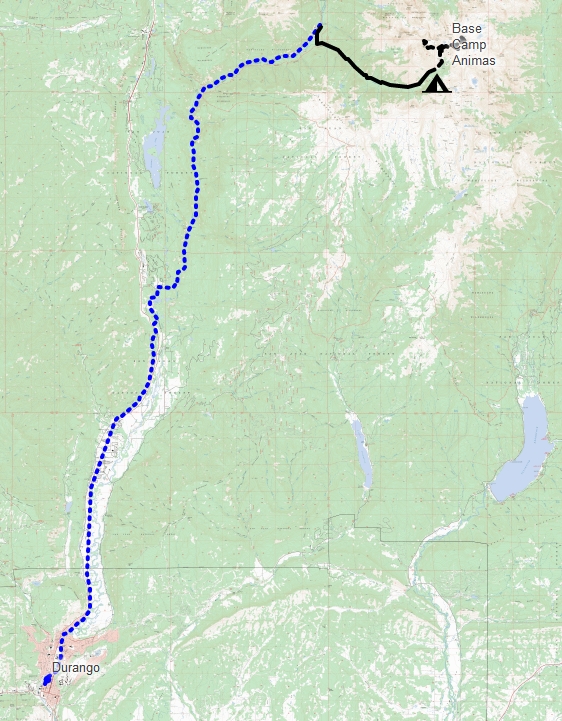
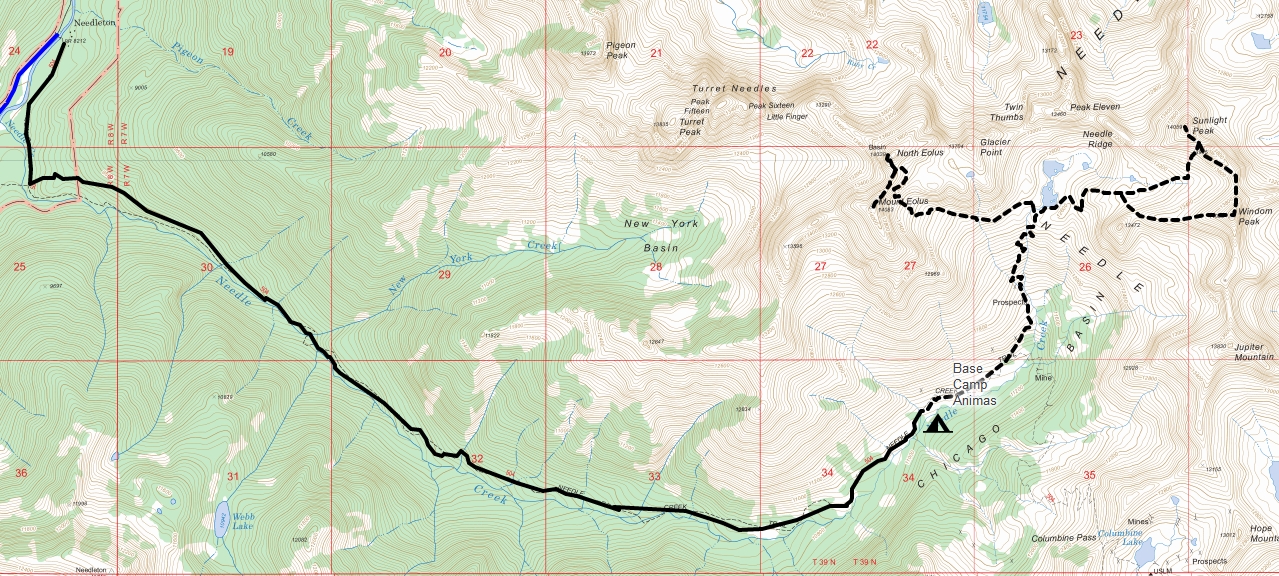
The Weminuche Wilderness (499,771 acres) was designated by Congress in 1975, and expanded by the Colorado Wilderness Acts of 1980 and 1993. It is the largest wilderness area in the state of Colorado and is located 4 miles southeast of the town of Silverton and 17 miles northeast of Durango. The Wilderness was named after the Weminuche Native Americans.
The Weminuche Wilderness is dissected by the Animas River Gorge through which the Durango and Silverton Narrow Gauge Railroad travels between Silverton and Durango. To the east of the Animas River lie the Needle Mountains (a subrange of the San Juan Mountains) and the bulk of the wilderness. To the west of the Animas River are the West Needle Mountains and the remaining portion of the wilderness. Two train stops within the gorge allow hikers access into the Needle Mountains.
The Chicago Basin comprises the upper portion of the Needle Creek watershed in the Needle Mountains. Needle Creek is an east-side tributary of the Animas River. The upper portion of the basin is surrounded by three fourteeners: Mount Eolus, Windom Peak, and Sunlight Peak. Columbine Pass lies to the east of the lower basin.
The lure of the wealth in the "Silvery San Juans" induced the Denver & Rio Grande Railway to begin building westward from the San Luis Valley. Durango was founded by the railroad in 1880, and a line was extended from Antonito, Colorado, to Durango, arriving in July 1881. For decades the line hauled ore from Silverton down to smelters in Durango. After surviving natural disasters, wars, and financial instability, on October 5, 1980, the train made its last run under Denver & Rio Grande ownership and the Durango & Silverton Narrow Gauge Railroad was founded.
